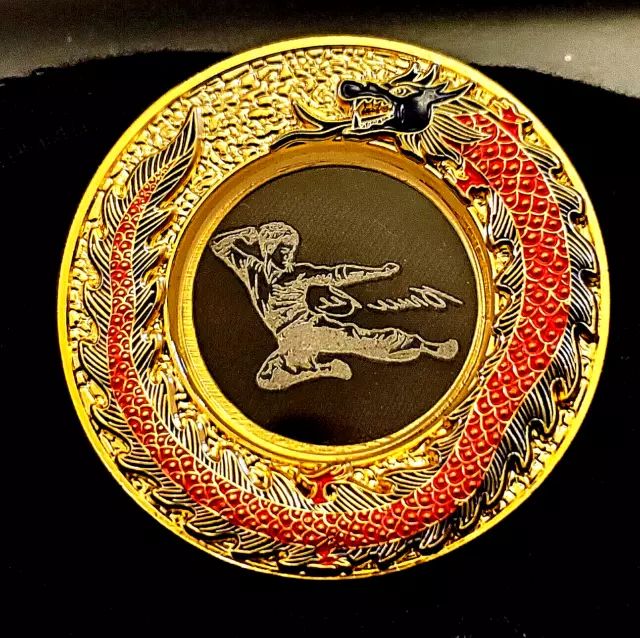Bruce Lee See Through Coin Autographed Dragon 3D Chinese Movie Star TV Vintage
£12.99 Buy It Now or Best Offer, £2.59 Shipping, 30-Day Returns, eBay Money Back Guarantee
Seller:  checkoutmyunqiuefunitems ✉️ (3,880) 99.9%,
Location: Manchester, Take a look at my other items, GB,
Ships to: WORLDWIDE,
Item: 276333807955
Bruce Lee See Through Coin Autographed Dragon 3D Chinese Movie Star TV Vintage. Bruce Lee Glass Coin This is a Uncirculated Commemoration Gold Plated Glass See Through Coin The middle of the coin has an etching of Bruce Lee with his Iconic Flying Kick and his Autograph One Side has the words "Bruce Lee 1940 - 1973" "50th Anniversary" "Kung Fu Master" The other side has a 3D Red Chinese Dragon The coin is 40mm in diameter and 5mm thick and it weighs about 1 oz. It comes in a plastic wallet In Excellent Condition Would make an Excellent Gift or Collectable Keepsake Souvenir for the a True Legend who died 50 years ag A Beautiful coin and Magnificent Keepsake Souvenir In Excellent Condition Sorry about the poor quality photos. They dont do the coin justice which looks a lot better in real life Click Here to Check out my similar Items I always combined postage on multiple items and I have a lot of Similar items to this on Ebay so why check out my other items Bid with Confidence - Check My 100% Positive Feedback from over 900 Satisfied Customers I always combine items and discount postage on multiple I Specialise in Unique Fun Items So For that Interesting Conversational Piece, A Birthday Present, Christmas Gift, A Comical Item to Cheer Someone Up or That Unique Perfect Gift for the Person Who has Everything....You Know Where to Look for a Bargain! Be sure to add me to your favourite sellers list All Items Dispatched within 24 hours of Receiving Payment and feedback let immedialtley as soon as payment received
checkoutmyunqiuefunitems ✉️ (3,880) 99.9%,
Location: Manchester, Take a look at my other items, GB,
Ships to: WORLDWIDE,
Item: 276333807955
Bruce Lee See Through Coin Autographed Dragon 3D Chinese Movie Star TV Vintage. Bruce Lee Glass Coin This is a Uncirculated Commemoration Gold Plated Glass See Through Coin The middle of the coin has an etching of Bruce Lee with his Iconic Flying Kick and his Autograph One Side has the words "Bruce Lee 1940 - 1973" "50th Anniversary" "Kung Fu Master" The other side has a 3D Red Chinese Dragon The coin is 40mm in diameter and 5mm thick and it weighs about 1 oz. It comes in a plastic wallet In Excellent Condition Would make an Excellent Gift or Collectable Keepsake Souvenir for the a True Legend who died 50 years ag A Beautiful coin and Magnificent Keepsake Souvenir In Excellent Condition Sorry about the poor quality photos. They dont do the coin justice which looks a lot better in real life Click Here to Check out my similar Items I always combined postage on multiple items and I have a lot of Similar items to this on Ebay so why check out my other items Bid with Confidence - Check My 100% Positive Feedback from over 900 Satisfied Customers I always combine items and discount postage on multiple I Specialise in Unique Fun Items So For that Interesting Conversational Piece, A Birthday Present, Christmas Gift, A Comical Item to Cheer Someone Up or That Unique Perfect Gift for the Person Who has Everything....You Know Where to Look for a Bargain! Be sure to add me to your favourite sellers list All Items Dispatched within 24 hours of Receiving Payment and feedback let immedialtley as soon as payment received
Thanks for Looking and Best of Luck with the Bidding!!
The Countries I Send to Include Afghanistan * Albania * Algeria * American Samoa (US) * Andorra * Angola * Anguilla (GB) * Antigua and Barbuda * Argentina * Armenia * Aruba (NL) * Australia * Austria * Azerbaijan * Bahamas * Bahrain * Bangladesh * Barbados * Belarus * Belgium * Belize * Benin * Bermuda (GB) * Bhutan * Bolivia * Bonaire (NL) * Bosnia and Herzegovina * Botswana * Bouvet Island (NO) * Brazil * British Indian Ocean Territory (GB) * British Virgin Islands (GB) * Brunei * Bulgaria * Burkina Faso * Burundi * Cambodia * Cameroon * Canada * Cape Verde * Cayman Islands (GB) * Central African Republic * Chad * Chile * China * Christmas Island (AU) * Cocos Islands (AU) * Colombia * Comoros * Congo * Democratic Republic of the Congo * Cook Islands (NZ) * Coral Sea Islands Territory (AU) * Costa Rica * Croatia * Cuba * Curaçao (NL) * Cyprus * Czech Republic * Denmark * Djibouti * Dominica * Dominican Republic * East Timor * Ecuador * Egypt * El Salvador * Equatorial Guinea * Eritrea * Estonia * Ethiopia * Falkland Islands (GB) * Faroe Islands (DK) * Fiji Islands * Finland * France * French Guiana (FR) * French Polynesia (FR) * French Southern Lands (FR) * Gabon * Gambia * Georgia * Germany * Ghana * Gibraltar (GB) * Greece * Greenland (DK) * Grenada * Guadeloupe (FR) * Guam (US) * Guatemala * Guernsey (GB) * Guinea * Guinea-Bissau * Guyana * Haiti * Heard and McDonald Islands (AU) * Honduras * Hong Kong (CN) * Hungary * Iceland * India * Indonesia * Iran * Iraq * Ireland * Isle of Man (GB) * Israel * Italy * Ivory Coast * Jamaica * Jan Mayen (NO) * Japan * Jersey (GB) * Jordan * Kazakhstan * Kenya * Kiribati * Kosovo * Kuwait * Kyrgyzstan * Laos * Latvia * Lebanon * Lesotho * Liberia * Libya * Liechtenstein * Lithuania * Luxembourg * Macau (CN) * Macedonia * Madagascar * Malawi * Malaysia * Maldives * Mali * Malta * Marshall Islands * Martinique (FR) * Mauritania * Mauritius * Mayotte (FR) * Mexico * Micronesia * Moldova * Monaco * Mongolia * Montenegro * Montserrat (GB) * Morocco * Mozambique * Myanmar * Namibia * Nauru * Navassa (US) * Nepal * Netherlands * New Caledonia (FR) * New Zealand * Nicaragua * Niger * Nigeria * Niue (NZ) * Norfolk Island (AU) * North Korea * Northern Cyprus * Northern Mariana Islands (US) * Norway * Oman * Pakistan * Palau * Palestinian Authority * Panama * Papua New Guinea * Paraguay * Peru * Philippines * Pitcairn Island (GB) * Poland * Portugal * Puerto Rico (US) * Qatar * Reunion (FR) * Romania * Russia * Rwanda * Saba (NL) * Saint Barthelemy (FR) * Saint Helena (GB) * Saint Kitts and Nevis * Saint Lucia * Saint Martin (FR) * Saint Pierre and Miquelon (FR) * Saint Vincent and the Grenadines * Samoa * San Marino * Sao Tome and Principe * Saudi Arabia * Senegal * Serbia * Seychelles * Sierra Leone * Singapore * Sint Eustatius (NL) * Sint Maarten (NL) * Slovakia * Slovenia * Solomon Islands * Somalia * South Africa * South Georgia (GB) * South Korea * South Sudan * Spain * Sri Lanka * Sudan * Suriname * Svalbard (NO) * Swaziland * Sweden * Switzerland * Syria * Taiwan * Tajikistan * Tanzania * Thailand * Togo * Tokelau (NZ) * Tonga * Trinidad and Tobago * Tunisia * Turkey * Turkmenistan * Turks and Caicos Islands (GB) * Tuvalu * U.S. Minor Pacific Islands (US) * U.S. Virgin Islands (US) * Uganda * Ukraine * United Arab Emirates * United Kingdom * United States * Uruguay * Uzbekistan * Vanuatu * Vatican City * Venezuela * Vietnam * Wallis and Futuna (FR) * Yemen * Zambia * Zimbabwe Bruce Jun Fan Lee (Lee Siu Loong) was born in 1940 in San Francisco, CA while his parents were on tour with the Chinese Opera. Ultimately raised in Hong Kong, Bruce Lee was a child actor appearing in more than 20 films. At the age of 13, Bruce took up the study of wing chun gung fu under renowned wing chun master, Yip Man. Bruce left Hong Kong at the age of 18, came to the United States and made his way to Seattle, Washington where he worked in the restaurant of a family friend. He soon enrolled in the University of Washington where he pursued a degree in philosophy. Bruce began to teach gung fu in Seattle and soon opened his first school, the Jun Fan Gung Fu Institute. Two more schools followed in Oakland and Los Angeles. Concurrently Bruce married his wife, Linda and had his two children, Brandon and Shannon. In the mid sixties, Bruce was discovered while doing an exhibition at the Long Beach Internationals and a role as Kato in the tv series The Green Hornet soon followed. During this time, Bruce was also developing his own martial art, which he ultimately named Jeet Kune Do (translated: the way of the intercepting fist). Bruce's art was steeped in a philosophical foundation and did not follow long held martial traditions. Instead it had at its core the ideas of simplicity, directness and personal freedom. After The Green Hornet series was canceled, Bruce encountered resistance while working in Hollywood and so headed to Hong Kong to pursue a film career. In Hong Kong he made 3 films, which consecutively broke all box office records and showcased martial arts in an entirely new way. Hollywood took notice and soon Bruce was making the first Hollywood / Hong Kong coproduction with a film called Enter the Dragon. Unfortunately, Bruce Lee died in 1973 before this film was released. This film catapulted him to international fame. Today Bruce Lee’s legacy of self expression, equality, and pioneering innovation continues to inspire people all around the world. Long Bio Bruce Jun Fan Lee was born in the hour of the Dragon, between 6 and 8 a.m., in the year of the Dragon on November 27, 1940 at the Jackson Street Hospital in San Francisco’s Chinatown. Bruce was the fourth child born to Lee Hoi Chuen and his wife Grace Ho. He had two older sisters, Phoebe and Agnes, an older brother, Peter, and a younger brother, Robert. Bruce’s parents gave him the name “Jun Fan.” The English name, BRUCE, was given to the baby boy by a nurse in the Jackson Street Hospital although he was never to use this name until he entered secondary school and began his study of the English language. At the age of three months, Lee Hoi Chuen, his wife Grace and baby Bruce returned to Hong Kong where Bruce would be raised until the age of 18. Bruce’s most prominent memory of his early years was the occupation of Hong Kong by the Japanese during World War II (1941-1945). At the age of 13, Bruce was introduced to Master Yip Man, a teacher of the Wing Chun style of gung fu. For five years Bruce studied diligently and became very proficient. He greatly revered Yip Man as a master teacher and wise man and frequently visited with him in later years. In high school, one of Bruce’s accomplishments was winning an interschool Boxing Championship against an English student in which the Marquis of Queensbury rules were followed and no kicking was allowed. Bruce was also a terrific dancer, and in 1958 he won the Hong Kong Cha Cha Championship. He studied dancing as assiduously as he did gung fu, keeping a notebook in which he had noted 108 different cha cha steps. In addition to his studies, gung fu and dancing, Bruce was also a child actor under the tutelage of his father who must have known from an early age that Bruce had a streak of showmanship. By the time he was 18, he had appeared in 20 films. At the age of 18, Bruce was looking for new vistas in his life, as were his parents who were discouraged that Bruce had gotten into some trouble fighting and had not made more progress academically. In April of 1959, with $100 in his pocket, Bruce boarded a steamship in the American Presidents Line and began his voyage to San Francisco. Bruce did not stay long in San Francisco, but traveled to Seattle where a family friend, Ruby Chow, had a restaurant and had promised Bruce a job and living quarters. By now Bruce had left his acting and dancing passions behind and was intent on furthering his education. He enrolled at Edison Technical School where he fulfilled the requirements for the equivalent of high school graduation and then enrolled at the University of Washington. At the university, Bruce majored in philosophy. His passion for gung fu inspired a desire to delve into the philosophical underpinnings and many of his written essays during those years would relate philosophical principles to certain martial arts techniques. In the three years that Bruce studied at the university, he supported himself by teaching gung fu, having by this time given up working in the restaurant, stuffing newspapers or various other odd jobs. The small circle of friends that Bruce was teaching encouraged him to open a real school of gung fu and charge a nominal sum for teaching in order to support himself while attending school. One of his students in 1963 was a freshman at the University of Washington, Linda Emery. Linda knew who Bruce was from his guest lectures in Chinese philosophy at Garfield High School where she had been a student, and in the summer after graduating, at the urging of her Chinese girlfriend, Sue Ann Kay, Linda started taking gung fu lessons. Bruce and Linda were married in 1964. By this time, Bruce had decided to make a career out of teaching gung fu. Leaving his Seattle school in the hands of Taky Kimura, Bruce and Linda moved to Oakland where Bruce opened his second school with James Lee. Having now been in the United States for five years, Bruce had left behind any thought of acting as a career, and devoted himself completely to his choice of martial arts as a profession. In 1964 Bruce was challenged by some gung fu men from San Francisco who objected to his teaching of non-Chinese students. Bruce accepted the challenge and the men arrived at the kwoon in Oakland on the appointed day for the face off. The terms were that if Bruce were defeated, he would stop teaching the non Chinese. It was a short fight with his opponent giving up when Bruce had him pinned to the floor. Even though he had won, he was winded and discouraged about his inability to put the man away in under three minutes. This marked a turning point for Bruce in his exploration of his martial art and the enhancement of his physical fitness. Thus began the evolution of Jeet Kune Do. Just as Bruce was cementing his plans to expand his martial arts schools, fate stepped in to move his life in another direction. In August of 1964, Ed Parker, widely regarded as the father of American Kenpo, invited Bruce to Long Beach, CA to give a demonstration at his First International Karate Tournament. A member of the audience was Jay Sebring, a well-known hair stylist to the stars. Jay told his producer client, William Dozier, about having seen this spectacular young Chinese man giving a gung fu demonstration just a few nights before. Mr. Dozier obtained a copy of the film that was taken at Ed Parker’s tournament. The next week he called Bruce at home in Oakland and invited him to come to Los Angeles for a screen test. About this time things were changing in Bruce’s personal life as well. His own number one son, Brandon Bruce Lee, was born February 1, 1965. One week later Bruce’s father, Lee Hoi Chuen, died in Hong Kong. Bruce was pleased that his father had known about the birth of the first grandchild in the Lee family. Bruce was in a period of transition at this time, deciding whether to make acting his career or continue on the path of opening nationwide schools of gung fu. His decision was to focus on acting and see if he could turn it into a productive career, which showcased his passion for the martial arts. Bruce loved to teach gung fu, and he loved his students. However, he had begun to see that if his schools became more numerous, he would lose control of the quality of the teaching. His love for martial arts was such that he did not wish to dilute the quality with which he approached it. The years between 1967 and 1971 were lean years for the Lee family. Bruce worked hard at furthering his acting career and did get some roles in a few TV series and films. (See Filmography) To support the family, Bruce taught private lessons in Jeet Kune Do, often to people in the entertainment industry. Some of his clients included Steve McQueen, James Coburn, Stirling Silliphant, Sy Weintraub, Ted Ashley, Joe Hyams, James Garner, Kareem Abdul Jabbar and others. One more blessing was the arrival of a daughter, Shannon Emery Lee, on April 19, 1969. She brought great joy into the Lee household and soon had her daddy around her little finger. During this time Bruce continued the process he had started in Oakland in 1964, the evolution of his way of martial arts, which he called Jeet Kune Do, “The Way of The Intercepting Fist.” Bruce was devoted to physical culture and trained devotedly. It was actually his zealousness that led to an injury that was to become a chronic source of pain for the rest of his life. On a day in 1970, without warming up, something he always did, Bruce picked up a 125-pound barbell and did a “good morning” exercise severely injuring his back. After much pain and many tests, it was determined that he had sustained an injury to the fourth sacral nerve. He was ordered to complete bed rest and told that undoubtedly he would never do gung fu again. For the next six months, Bruce stayed in bed. It was an extremely frustrating, depressing and painful time, and a time to redefine goals. It was also during this time that he did a great deal of the writing that has been preserved. After several months, Bruce instituted his own recovery program and began walking, gingerly at first, and gradually built up his strength. In 1970, when Bruce was getting his strength back from his back injury, he took a trip to Hong Kong with son Brandon, age five. Hong Kong producer Raymond Chow contacted Bruce to interest him in doing two films for Golden Harvest. Bruce decided to do it, reasoning that if he couldn’t enter the front door of the American studios, he would go to Hong Kong, establish himself there and come back in through the side door. In the summer of 1971, Bruce left Los Angeles to fly to Hong Kong, then on to Thailand for the making of “The Big Boss,” later also called “Fists of Fury.” Although the working conditions were difficult, and the production quality substandard to what Bruce was accustomed, “The Big Boss” was a huge success. In September of 1971, with filming set to commence on the second of the contractual films, Bruce moved his family over to Hong Kong. “Fist of Fury,” also called “Chinese Connection” was an even bigger success than the first film breaking all-time box office records. Now that Bruce had completed his contract with Golden Harvest, and had become a bankable commodity, he could begin to have more input into the quality of his films. For the third film, he formed a partnership with Raymond Chow, called Concord Productions. Not only did Bruce write “The Way of the Dragon,” also called “Return of the Dragon,” but he directed and produced it as well. Once again, the film broke records and now, Hollywood was listening. In the fall of 1972, Bruce began filming “The Game of Death,” a story he once again envisioned. The filming was interrupted by the culmination of a deal with Warner Bros. to make the first ever Hong Kong-American co-production. The deal was facilitated mainly by Bruce’s personal relationship with Warner Bros. president, Ted Ashley and by Bruce’s successes in Hong Kong. It was an exciting moment and a turning point in Hong Kong’s film industry. “The Game of Death” was put on hold to make way for the filming of “Enter the Dragon.” “Enter the Dragon” was due to premier at Hollywood’s Chinese theater in August of 1973. Unfortunately, Bruce would not live to see the opening of his film. On July 20, 1973, Bruce had a minor headache. He was offered a prescription painkiller called Equagesic. After taking the pill, he went to lie down and lapsed into a coma. He was unable to be revived. Extensive forensic pathology was done to determine the cause of his death, which was not immediately apparent. A nine-day coroner’s inquest was held with testimony given by renowned pathologists flown in from around the world. The determination was that Bruce had a hypersensitive reaction to an ingredient in the pain medication that caused a swelling of the fluid on the brain, resulting in a coma and death. The world lost a brilliant star and an evolved human being that day. His spirit remains an inspiration to untold numbers of people around the world. “Do not pray for an easy life, pray for the strength to endure a difficult one.” Martial arts Martial arts are codified systems and traditions of combat practiced for a number of reasons such as self-defense; military and law enforcement applications; competition; physical, mental, and spiritual development; entertainment; and the preservation of a nation's intangible cultural heritage.[1] Etymology According to Paul Bowman, the term martial arts was popularized by mainstream popular culture during the 1960s to 1970s, notably by Hong Kong martial arts films (most famously those of Bruce Lee) during the so-called "chopsocky" wave of the early 1970s.[2] According to John Clements, the term martial arts itself is derived from an older Latin term meaning "arts of Mars", the Roman god of war, and was used to refer to the combat systems of Europe (European martial arts) as early as the 1550s.[3] The term martial science, or martial sciences, was commonly used to refer to the fighting arts of East Asia (Asian martial arts) up until the 1970s, while the term Chinese boxing was also used to refer to Chinese martial arts up until then.[4] Some authors have argued that fighting arts or fighting systems would be more appropriate terms on the basis that many martial arts were never "martial" in the sense of being used or created by professional warriors.[5] Variation and scope This section does not cite any sources. Please help improve this section by adding citations to reliable sources. Unsourced material may be challenged and removed. (February 2021) (Learn how and when to remove this template message) Martial arts may be categorized using a variety of criteria, including: Traditional/historical arts vs. contemporary styles: e.g., folk wrestling compared to modern hybrid martial arts. Techniques taught: armed vs. unarmed, and within these categories armed: by type of weapon (swordsmanship, stick fighting etc.) unarmed: by type of combat (grappling vs. striking, stand-up fighting vs. ground fighting) By application or intent: self-defense, combat sport, choreography or demonstration of forms, physical fitness, meditation, etc. Within Chinese tradition: "external" vs. "internal" styles By technical focus Unarmed Unarmed martial arts can be broadly grouped into those focusing on strikes, those focusing on grappling, and those that cover both fields, often described as hybrid martial arts. Strikes Punching: Boxing, Wing Chun, Karate Kicking: Kickboxing, Taekwondo, Capoeira, Savate Others using strikes: Lethwei, Muay Thai, Kung Fu, Pencak Silat, Kalaripayattu Grappling Throwing: Hapkido, Judo, Sumo, Wrestling, Aikido Joint lock/Chokeholds/Submission holds: Jujutsu, Brazilian jiu-jitsu, Sambo, Catch wrestling Pinning Techniques: Judo, Wrestling, Aikido Armed The traditional martial arts that cover armed combat often encompass a wide spectrum of melee weapons, including bladed weapons and polearms. Such traditions include eskrima, silat, kalaripayat, kobudo, and historical European martial arts, especially those of the German Renaissance. Many Chinese martial arts also feature weapons as part of their curriculum. Sometimes, training with one specific weapon may be considered a style in its own right, especially in the case of Japanese martial arts, with disciplines such as kenjutsu and kendo (sword), bojutsu (staff), and kyūdō (archery). Similarly, modern martial arts and sports include modern fencing, stick-fighting systems like canne de combat, modern competitive archery and practical shooting. By application or intent Combat-oriented Main articles: Combat sport and Self-defense Health-oriented Many martial arts, especially those from Asia, also teach side disciplines which pertain to medicinal practices. This is particularly prevalent in traditional Asian martial arts which may teach bone-setting, herbalism, and other aspects of traditional medicine. Spirituality-oriented Martial arts can also be linked with religion and spirituality. Numerous systems are reputed to have been founded, disseminated, or practiced by monks or nuns. Throughout the Asian arts, meditation may be incorporated as a part of training. In the arts influenced by a mix of Chan Buddhist, Taoist and Confucian philosophy, the practice itself may be used as an aid to attaining mindfulness. Japanese styles, when concerning non-physical qualities of the combat, are often strongly influenced by Mahayana Buddhist philosophy. Concepts like "empty mind" and "beginner's mind" are recurrent. Aikido practitioners for instance, can have a strong philosophical belief of the flow of energy and peace fostering, as idealised by the art's founder Morihei Ueshiba. Traditional Korean martial arts place emphasis on the development of the practitioner's spiritual and philosophical development. A common theme in most Korean styles, such as Taekkyon, taekwondo, and Hapkido is the value of "inner peace" in a practitioner, which is stressed to be only achievable through individual meditation and training. The Koreans believe that the use of physical force is only justifiable for self defense.[6] Systema draws upon breathing and relaxation techniques, as well as elements of Russian Orthodox thought, to foster self-conscience and calmness, and to benefit the practitioner in different levels: the physical, the psychological and the spiritual. Some martial arts in various cultures can be performed in dance-like settings for various reasons, such as for evoking ferocity in preparation for battle or showing off skill in a more stylized manner, with capoeira being the most prominent example. Many such martial arts incorporate music, especially strong percussive rhythms (see also war dance). Pahlevani and zourkhaneh rituals is the name of a Persian Martial arts inscribed by UNESCO for varzesh-e pahlavāni (Persian: آیین پهلوانی و زورخانهای, "heroic sport")[7] or varzesh-e bāstāni (ورزش باستانی; varzeš-e bāstānī, "ancient sport"), a traditional system of athletics originally used to train warriors in Iran (Persia), and first appearing under this name and form in the Safavid era, with similarities to systems in adjacent lands under other names.[8][9] History Main article: History of martial arts Further information: Martial arts timeline Historical martial arts Main articles: History of Asian martial arts and Historical European martial arts Further information: History of boxing and History of fencing Detail of the wrestling fresco in tomb 15 at Beni Hasan. The martial art of boxing was practiced in ancient Thera. Human warfare dates back to the Epipalaeolithic to early Neolithic era. The oldest works of art depicting scenes of battle are cave paintings from eastern Spain (Spanish Levante) dated between 10,000 and 6,000 BCE that show organized groups fighting with bows and arrows.[10][11] Similar evidence of warfare has been found in Epipalaeolithic to early Neolithic era mass burials, excavated in Germany and at Jebel Sahaba in Northern Sudan.[10] Wrestling is the oldest combat sport, with origins in hand-to-hand combat. Belt wrestling was depicted in works of art from Mesopotamia and Ancient Egypt c. 3000 BC, and later in the Sumerian Epic of Gilgamesh.[12] The earliest known depiction of boxing comes from a Sumerian relief in Mesopotamia (modern Iraq) from the 3rd millennium BC.[13] A Chinese martial artist preparing to throw his opponent during a lei tai contest in Ancient China. The foundation of modern East Asian martial arts and South Asian martial arts is likely facilitated by cultural exchanges of early Chinese and Indian martial arts. During the Warring States period of Chinese history (480–221 BC) extensive development in martial philosophy and strategy emerged, as described by Sun Tzu in The Art of War (c. 350 BC).[14] Legendary accounts link the origin of Shaolinquan to the spread of Buddhism from ancient India during the early 5th century CE, with the figure of Bodhidharma, to China.[15] Written evidence of martial arts in Southern India dates back to the Sangam literature of about the 2nd century BCE to the 2nd century AD.[citation needed] The combat techniques of the Sangam period were the earliest precursors to Kalaripayattu.[16] Pankratiasts fighting under the eyes of a judge. Side B of a Panathenaic prize amphora, c. 500 BC. In Europe, the earliest sources of martial arts traditions date to Ancient Greece. Boxing (pygme, pyx), wrestling (pale) and pankration were represented in the Ancient Olympic Games. The Romans produced gladiatorial combat as a public spectacle.[17] A number of historical combat manuals have survived from the European Middle Ages. This includes such styles as sword and shield, two-handed swordfighting and other types of melee weapons besides unarmed combat. Amongst these are transcriptions of Johannes Liechtenauer's mnemonic poem on the longsword dating back to the late fourteenth century. Likewise, Asian martial arts became well-documented during the medieval period, Japanese martial arts beginning with the establishment of the samurai nobility in the 12th century, Chinese martial arts with Ming era treatises such as Ji Xiao Xin Shu, Indian martial arts in medieval texts such as the Agni Purana and the Malla Purana, and Korean martial arts from the Joseon era and texts such as Muyejebo (1598).[citation needed] European swordsmanship always had a sportive component, but the duel was always a possibility until World War I. Modern sport fencing began developing during the 19th century as the French and Italian military academies began codifying instruction. The Olympic games led to standard international rules, with the Féderation Internationale d'Escrime founded in 1913. Modern boxing originates with Jack Broughton's rules in the 18th century, and reaches its present form with the Marquess of Queensberry Rules of 1867.[citation needed] Folk styles Main article: Folk wrestling Certain traditional combat sports and fighting styles exist all over the world, rooted in local culture and folklore. The most common of these are styles of folk wrestling, some of which have been practiced since antiquity and are found in the most remote areas. Other examples include forms of stick fighting and boxing. While these arts are based on historical traditions of folklore, they are not "historical" in the sense that they reconstruct or preserve a historical system from a specific era. They are rather contemporary regional sports that coexist with the modern forms of martial arts sports as they have developed since the 19th century, often including cross-fertilization between sports and folk styles; thus, the traditional Thai art of muay boran developed into the modern national sport of muay Thai, which in turn came to be practiced worldwide and contributed significantly to modern hybrid styles like kickboxing and mixed martial arts. Singlestick, an English martial art can be seen often utilized in morris dancing. Many European dances share elements of martial arts with examples including Ukrainian Hopak, Polish Zbójnicki (use of ciupaga), the Czech dance odzemek, and the Norwegian Halling.[citation needed] Modern history Further information: Modern history of East Asian martial arts Late 19th to early 20th century The mid to late 19th century marks the beginning of the history of martial arts as modern sports developed out of earlier traditional fighting systems. In Europe, this concerns the developments of boxing, wrestling and fencing as sports. In Japan, the same period marks the formation of the modern forms of judo, jujutsu, karate, and kendo (among others) based on revivals of old schools of Edo period martial arts which had been suppressed during the Meiji Restoration[citation needed] Modern muay Thai rules date to the 1920s. In China, the modern history of martial arts begins in the Nanjing decade (1930s) following the foundation of the Central Guoshu Institute in 1928 under the Kuomintang government.[citation needed] Western interest in Asian martial arts arises towards the end of the 19th century, due to the increase in trade between the United States with China and Japan.[citation needed] Relatively few Westerners actually practiced the arts, considering it to be mere performance. Edward William Barton-Wright, a railway engineer who had studied jujutsu while working in Japan between 1894 and 1897, was the first man known to have taught Asian martial arts in Europe. He also founded an eclectic style named Bartitsu which combined jujutsu, judo, wrestling, boxing, savate and stick fighting.[citation needed] Fencing and Greco-Roman wrestling was included in the 1896 Summer Olympics. FILA Wrestling World Championships and Boxing at the Summer Olympics were introduced in 1904. The tradition of awarding championship belts in wrestling and boxing can be traced to the Lonsdale Belt, introduced in 1909.[18] 20th century (1914 to 1989) This section needs additional citations for verification. Please help improve this article by adding citations to reliable sources. Unsourced material may be challenged and removed. (February 2021) (Learn how and when to remove this template message) Bruce Lee (right) and his teacher Ip Man (left). Jackie Chan, one of the best known actors and martial artists. The International Boxing Association was established in 1920. World Fencing Championships have been held since 1921. As Western influence grew in Asia a greater number of military personnel spent time in China, Japan and South Korea during World War II and the Korean War and were exposed to local fighting styles. Jujutsu, judo and karate first became popular among the mainstream from the 1950s–1960s. Due in part to Asian and Hollywood martial arts movies, most modern American martial arts are either Asian-derived or Asian influenced.[19] The term kickboxing (キックボクシング) was created by the Japanese boxing promoter Osamu Noguchi for a variant of muay Thai and karate that he created in the 1950s. American kickboxing was developed in the 1970s, as a combination of boxing and karate. Taekwondo was developed in the context of the Korean War in the 1950s. The later 1960s and 1970s witnessed an increased media interest in Chinese martial arts, influenced by martial artist Bruce Lee. Bruce Lee is credited as one of the first instructors to openly teach Chinese martial arts to Westerners.[20] World Judo Championships have been held since 1956, Judo at the Summer Olympics was introduced in 1964. Karate World Championships were introduced in 1970. The "kung fu wave" of Hong Kong action cinema in the 1970s, especially Bruce Lee films, popularized martial arts in global popular culture. A number of mainstream films produced during the 1980s also contributed significantly to the perception of martial arts in Western popular culture. These include The Karate Kid (1984) and Bloodsport (1988). This era produced some Hollywood action stars with martial arts background, such as Jean-Claude Van Damme and Chuck Norris. Also during the 20th century, a number of martial arts were adapted for self-defense purposes for military hand-to-hand combat. World War II combatives, KAPAP (1930s) and Krav Maga (1950s) in Israel, Systema in Soviet-era Russia, and Sanshou in the People's Republic of China are examples of such systems. The US military de-emphasized hand-to-hand combat training during the Cold War period, but revived it with the introduction of LINE in 1989. 1990 to present In 1993, the first Pancrase event was held in Japan.[21] The K-1 rules of kickboxing were introduced, based on 1980s Seidokaikan karate.[22] During the 1990s, Brazilian jiu-jitsu became popular and proved to be effective in mixed martial arts (MMA) competitions such as the UFC and PRIDE.[23] Jackie Chan and Jet Li are prominent martial artists who have become major movie figures. Their popularity and media presence has been at the forefront for promoting Chinese martial arts since the late 20th and early 21st centuries.[citation needed] With the continual discovery of more medieval and Renaissance fighting manuals, the practice of Historical European Martial Arts and other Western Martial Arts have been growing[citation needed] in popularity across the United States and Europe.[citation needed] On 29 November 2011, UNESCO inscribed Taekkyon onto its Intangible Cultural Heritage of Humanity List.[24] Revival Many styles of Indian martial arts were banned by the colonial authorities during the period of British rule in India, which led to a decline in their popularity.[25] Some, such as Kalaripayattu, did not undergo such declines since they were mostly practised in areas of the Indian subcontinent outside direct British control. Other Indian martial art, such as Silambam, while not widely practiced in India, continue to be practiced in other countries in the Indian cultural sphere such as Indonesia and Malaysia. Many other Indian martial arts such as Mardhani Khel and Paika Akhada survived by practitioners practicing the art in secret, or by telling the colonial authorities that it was a form of dance. While many regional Indian martial arts forms are fading into obscurity, martial arts such as Gatka and Kalaripayattu are experiencing a gradual resurgence.[26] Testing and competition This section needs additional citations for verification. Please help improve this article by adding citations to reliable sources. Unsourced material may be challenged and removed. (February 2021) (Learn how and when to remove this template message) Testing or evaluation is important to martial artists of many disciplines who wish to determine their progression or own level of skill in specific contexts. Students often undergo periodic testing and grading by their own teacher in order to advance to a higher level of recognized achievement, such as a different belt color or title. The type of testing used varies from system to system but may include forms or sparring. Steven Ho executing a Jump Spin Hook Kick Various forms and sparring are commonly used in martial art exhibitions and tournaments. Some competitions pit practitioners of different disciplines against each other using a common set of rules, these are referred to as mixed martial arts competitions. Rules for sparring vary between art and organization but can generally be divided into light-contact, medium-contact, and full-contact variants, reflecting the amount of force that should be used on an opponent. Light- and medium-contact These types of sparring restrict the amount of force that may be used to hit an opponent, in the case of light sparring this is usually to 'touch' contact, e.g. a punch should be 'pulled' as soon as or before contact is made. In medium-contact (sometimes referred to as semi-contact) the punch would not be 'pulled' but not hit with full force. As the amount of force used is restricted, the aim of these types of sparring is not to knock out an opponent; a point system is used in competitions. A referee acts to monitor for fouls and to control the match, while judges mark down scores, as in boxing. Particular targets may be prohibited, certain techniques may be forbidden (such as headbutting or groin hits), and fighters may be required to wear protective equipment on their head, hands, chest, groin, shins or feet. Some grappling arts, such as aikido, use a similar method of compliant training that is equivalent to light or medium contact. In some styles (such as fencing and some styles of taekwondo sparring), competitors score points based on the landing of a single technique or strike as judged by the referee, whereupon the referee will briefly stop the match, award a point, then restart the match. Alternatively, sparring may continue with the point noted by the judges. Some critics of point sparring feel that this method of training teaches habits that result in lower combat effectiveness. Lighter-contact sparring may be used exclusively, for children or in other situations when heavy contact would be inappropriate (such as beginners), medium-contact sparring is often used as training for full contact. Full-contact Further information: Full-contact Full-contact sparring or competition, where strikes or techniques are not pulled but used with full force as the name implies, has a number of tactical differences from light and medium-contact sparring. It is considered by some to be requisite in learning realistic unarmed combat.[27] In full-contact sparring, the aim of a competitive match is to knock out the opponent or to force the opponent to submit. Where scoring takes place it may be a subsidiary measure, only used if no clear winner has been established by other means; in some competitions, such as the UFC 1, there was no scoring, though most now use some form of judging as a backup.[28] Due to these factors, full-contact matches tend to be more aggressive in character, but rule sets may still mandate the use of protective equipment, or limit the techniques allowed. Nearly all mixed martial arts organizations such as UFC, Pancrase, Shooto use a form of full-contact rules as do professional boxing organizations and K-1. Kyokushin karate requires advanced practitioners to engage in bare-knuckled, full-contact sparring allowing kicks, knees and punching although punching to the head is disallowed while wearing only a karate gi and groin protector. Brazilian jiu-jitsu and judo matches do not allow striking, but are full-contact in the sense that full force is applied in the permitted grappling and submission techniques. Competitions held by World Taekwondo requires the use of Headgear and padded vest, but are full contact in the sense that full force is applied to strikes to the head and body, and win by knockout is possible. Martial sport See also: Combat sport Several martial arts, such as judo, are Olympic sports. Martial arts have crossed over into sports when forms of sparring become competitive, becoming a sport in its own right that is dissociated from the original combative origin, such as with western fencing. The Summer Olympic Games includes judo, taekwondo, western archery, boxing, javelin, wrestling and fencing as events, while Chinese wushu recently failed in its bid to be included, but is still actively performed in tournaments across the world. Practitioners in some arts such as kickboxing and Brazilian jiu-jitsu often train for sport matches, whereas those in other arts such as aikido generally spurn such competitions. Some schools believe that competition breeds better and more efficient practitioners, and gives a sense of good sportsmanship. Others believe that the rules under which competition takes place have diminished the combat effectiveness of martial arts or encourage a kind of practice which focuses on winning trophies rather than a focus such as cultivating a particular moral character. The question of "which is the best martial art" has led to inter style competitions fought with very few rules allowing a variety of fighting styles to enter with few limitations. This was the origin of the first Ultimate Fighting Championship tournament (later renamed UFC 1: The Beginning) in the USA inspired by the Brazilian Vale tudo tradition and along with other minimal rule competitions, most notably those from Japan such as Shooto and Pancrase, have evolved into the combat sport of Mixed Martial Arts (MMA). Some martial artists compete in non-sparring competitions such as breaking or choreographed routines of techniques such as poomse, kata and aka, or modern variations of the martial arts which include dance-influenced competitions such as tricking. Martial traditions have been influenced by governments to become more sport-like for political purposes; the central impetus for the attempt by the People's Republic of China in transforming Chinese martial arts into the committee-regulated sport of wushu was suppressing what they saw as the potentially subversive aspects of martial training, especially under the traditional system of family lineages.[29] Health and fitness benefits Martial arts training aims to result in several benefits to trainees, such as their physical, mental, emotional and spiritual health.[30] Through systematic practice in the martial arts a person's physical fitness may be boosted (strength, stamina, speed, flexibility, movement coordination, etc.) as the whole body is exercised and the entire muscular system is activated.[citation needed] Beyond contributing to physical fitness, martial arts training also has benefits for mental health, contributing to self-esteem, self-control, emotional and spiritual well-being. For this reason, a number of martial arts schools have focused purely on therapeutic aspects, de-emphasizing the historical aspect of self-defense or combat completely.[citation needed] According to Bruce Lee, martial arts also have the nature of an art, since there is emotional communication and complete emotional expression.[citation needed] Self-defense, military and law enforcement applications Main articles: Hand-to-hand combat and Self-defense U.S. Army combatives instructor demonstrates a chokehold. Some traditional martial concepts have seen new use within modern military training. Perhaps the most recent example of this is point shooting which relies on muscle memory to more effectively utilize a firearm in a variety of awkward situations, much the way an iaidoka would master movements with their sword. Demonstration of a Ju-Jitsu defense against a knife attack. Berlin 1924 During the World War II era William E. Fairbairn and Eric A. Sykes were recruited by the Special Operations Executive (SOE) to teach their martial art of Defendu (itself drawing on Western boxing and Jujutsu) and pistol shooting to UK, US, and Canadian special forces. The book Kill or Get Killed, written by Colonel Rex Applegate, was based on the Defendu taught by Sykes and Fairbairn. Both Fairbairn's Get Tough and Appelgate's Kill or Get Killed became classic works on hand-to-hand combat.[citation needed] Traditional hand-to-hand, knife, and spear techniques continue to see use in the composite systems developed for today's wars. Examples of this include European Unifight, the US Army's Combatives system developed by Matt Larsen, the Israeli army's KAPAP and Krav Maga, and the US Marine Corps's Marine Corps Martial Arts Program (MCMAP). Unarmed dagger defenses identical to those found in the manual of Fiore dei Liberi and the Codex Wallerstein were integrated into the U.S. Army's training manuals in 1942[31] and continue to influence today's systems along with other traditional systems such as eskrima and silat.[citation needed] The rifle-mounted bayonet which has its origin in the spear, has seen use by the United States Army, the United States Marine Corps, and the British Army as recently as the Iraq War.[32] Many martial arts are also seen and used in Law Enforcement hand-to-hand training. For example, the Tokyo Riot Police's use of aikido.[33] Martial arts industry Martial arts since the 1970s has become a significant industry, a subset of the wider sport industry (including cinema and sports television).[citation needed] Hundreds of millions of people worldwide practice some form of martial art. Web Japan (sponsored by the Japanese Ministry of Foreign Affairs) claims there are 50 million karate practitioners worldwide.[34] The South Korean government in 2009 published an estimate that taekwondo is practiced by 70 million people in 190 countries.[35] The wholesale value of martial arts related sporting equipment shipped in the United States was estimated at US$314 million in 2007; participation in the same year was estimated at 6.9 million (ages 6 or older, 2% of US population).[36] R. A. Court, CEO of Martial Arts Channel, stated the total revenue of the US martial arts industry at US$40 billion and the number of US practitioners at 30 million in 2003.[37] Equipment Martial arts equipment can include that which is used for conditioning, protection and weapons. Specialized conditioning equipment can include breaking boards, dummy partners such as the wooden dummy, and targets such as punching bags and the makiwara. Protective equipment for sparring and competition includes boxing gloves, headgear and mouthguards.[38] Martial arts fraud Asian martial arts experienced a surge of popularity in the West during the 1970s, and the rising demand resulted in numerous low quality or fraudulent schools. Fueled by fictional depictions in martial arts movies, this led to the ninja craze of the 1980s in the United States.[39] There were also numerous fraudulent ads for martial arts training programs, inserted into comic books circa the 1960s and 1970s, which were read primarily by adolescent boys.[40] In the seventies, lower ranks (kyu) began to be given colorful belts to show progress. This proved to be commercially viable and colored-belt systems were adopted in many martial arts degree mills (also known as McDojos and belt factories) as a means to generate additional cash. This was covered in the Penn & Teller: Bullshit! episode "Martial Arts" (June 2010).[citation needed] See also Martial arts portal Martial arts timeline History of martial arts List of martial arts References "martial art | Definition, History, Types, & Facts". Encyclopedia Britannica. Retrieved 13 January 2020. Bowman, Paul (2021). The Invention of Martial Arts: Popular Culture Between Asia and America. Oxford University Press. ISBN 978-0-19-754033-6. Clements, John (January 2006). "A Short Introduction to Historical European Martial Arts" (PDF). Meibukan Magazine (Special Edition No. 1): 2–4. Archived from the original (PDF) on 18 March 2012. Retrieved 21 December 2012. Lewis, Dan (22 April 1973). "Newest Movie Craze: Chinese Agents". Lima News. p. 30. Retrieved 15 April 2022 – via NewspaperArchive. First there were "spaghetti westerns" made in Italy, and then the Spanish got into the act and they became "gaspacho westerns." Now, there's going to be an invasion of "chow mein spies." It's the newest rage, the superhero Chinese agent, who takes on 84 adversaries at one time and pounds them into the ground — without a dangerous weapon, except his hands and his feet. They're coming here under the label of "martial sciences," an umbrella label that takes in all of the oriental arts of self-defense, such as karate, jujitso, kung fu and so on. They're made in Hong Kong and the biggest hero of them all at the moment, surely the biggest box-office attraction there, is a face pretty familiar to American television audiences. Remember Bruce Lee, the swift, agile oriental chauffeur in "The Green Hornet"? (...) Lee already has starred in three Chinese boxer (another label) pictures and there are several dozen others available to the international market. They reportedly are sweeping the European market and have just started to infiltrate the American scene. Warner Brothers has just released one called "The Five Fingers of Death" and, with Fred Weintraub as producer, is now involved in the first American-Chinese production of a martial-science picture, a film that stars Bruce (Kato) Lee. Donn F. Draeger and P'ng Chye Khim (1979). Shaolin Lohan Kung-fu. Tuttle Publishing. "Taekwondo in a Street Fight: Effective for Self-defense?". www.sportsver.com. 28 March 2020. Retrieved 15 April 2022. official IZSF Martial arts at Encyclopædia Iranica "Pahlevani and Zoorkhanei rituals". Hamblin, William J. (2006). Warfare in the ancient Near East to 1600 BC : holy warriors at the dawn of history (Repr. ed.). New York: Routledge. p. 15. ISBN 978-0415255899. Nash, George, "Assessing rank and warfare strategy in prehistoric hunter-gatherer society: a study of representational warrior figures in rock-art from the Spanish Levant" in: M. Parker Pearson & I.J.N. Thorpe (eds.), Warfare, violence and slavery in prehistory: proceedings of a Prehistoric Society conference at Sheffield University, 2005, Archaeopress, ISBN 1841718165, 978-1841718163, Fully online, Bristol University "Wrestling". Encyclopedia Britannica. Retrieved 2 September 2019. Michael Poliakoff. "Encyclopædia Britannica entry for Boxing". Britannica.com. Retrieved 18 May 2013. "Sun Tzu Biography and Introduction: Sun Tzu The Art of War and Strategy Site by". Sonshi. Com. Retrieved 7 November 2010. Reid, Howard and Croucher, Michael (1983). The Way of the Warrior – The Paradox of the Martial Arts. New York: Overlook Press[ISBN missing][page needed] "Actualizing Power and Crafting a Self in Kalarippayattu". spa.exeter.ac.uk. Retrieved 29 February 2016. "Roman Games, Chariot Races & Spectacle". World History Encyclopedia. Retrieved 12 November 2021. "Lonsdale Belt | boxing | Britannica". www.britannica.com. Retrieved 1 March 2022. Berreby, David (28 August 1988). "The Martial Arts as Moneymakers". The New York Times. Retrieved 4 December 2010. "Jeet Kune Do". absolutedefense.net. Archived from the original on 17 July 2014. Retrieved 27 May 2014. "The origins, history and rules from the early days of Pancrase circa 1993". bloodyelbow.com. 29 March 2014. Retrieved 27 May 2014. Soldwedel, A. (2003). 21st Century Shogun. Black Belt, 41 (1), 54-59. "fighting art used in the UFC". UFC.com. Archived from the original on 23 May 2010. Retrieved 7 November 2010. "UNESCO Culture Sector – Intangible Heritage – 2003 Convention". UNESCO.org. Tandon, Nikita. "Reviving the Lost Martial Arts of India". The Armchair Lounge. Archived from the original on 21 August 2018. Retrieved 1 March 2016. Manoharan, Suresh K. "History of Varmakalai". www.varmam.org. Retrieved 1 March 2016. "Aliveness 101". Straight Blast gym. Archived from the original on 7 January 2009. Retrieved 3 November 2008. – An essay on contact levels in training Dave Meltzer (12 November 2007). "First UFC forever altered combat sports". Yahoo! Sports. Archived from the original on 4 June 2011. Retrieved 3 November 2008. Fu, Zhongwen (2006) [1996]. Mastering Yang Style Taijiquan. Berkeley, California: Blue Snake Books. Bu, Bin; Haijun, Han; Yong, Liu; Chaohui, Zhang; Xiaoyuan, Yang; Singh, Maria Fiatarone (2010). "Effects of martial arts on health status: A systematic review". Journal of Evidence-Based Medicine. 3 (4): 205–219. doi:10.1111/j.1756-5391.2010.01107.x. PMID 21349072. S2CID 41065668. Vail, Jason (2006). Medieval and Renaissance Dagger Combat. Paladin Press. pp. 91–95. Sean Rayment (13 June 2004). "British battalion 'attacked every day for six weeks'". The Daily Telegraph. London. Archived from the original on 11 January 2022. Retrieved 11 December 2008. Twigger, R. (1997). Angry White Pyjamas. London: Phoenix. ISBN 978-0753808580[page needed] "Martial Arts : Fact Sheet" (PDF). Web-japan.org. Retrieved 13 August 2015. Kim, H.-S. (2009): Taekwondo: A new strategy for Brand Korea Archived 23 July 2011 at the Wayback Machine (21 December 2009). Retrieved on 8 January 2010. Jack W. Plunkett (2009). Plunkett's Sports Industry Almanac, ISBN 978-1593921408. Black Belt Magazine September 2003, p. 20. "The Importance Of A Mouthguard When Playing Sport". Orthodontics Australia. 21 February 2020. Retrieved 6 October 2020. see “The Real Deal, The Buzzwords and the Latest Trend” Black Belt Magazine, June 1999, p. 78. Tom Heintjes (20 June 2017). "The Deadliest Ads Alive! | Hogan's Alley". Cartoonician.com. Archived from the original on 25 August 2015. Retrieved 13 August 2015. vte Martial arts List of stylesHistoryTimelineHard and soft Classification Regional origin ChinaEuropeIndiaIndonesiaItalianIrelandJapan OkinawaKoreaMainland Southeast AsiaPhilippinesRussiaVietnam Unarmed techniques ChokeholdClinchFootworkElbow strikeHeadbuttHoldKickKnee strikeJoint lockPunchSweepTakedownThrow Weapons DuelMelee weapons Knife fightingStick-fightingSwordsmanshipRanged weapons ArcheryShooting Training KataBoxing glovePractice weaponPunching bagPushing handsRandoriSparring Grappling BarrógBrazilian jiu-jitsuJudoJujutsuLuta Livre esportivaMalla-yuddhaPehlwaniSamboShuai jiaoSumoWrestling catchCornishfolkfreestyleGreco-RomanMongolianoilshoot Striking BandoBoxingCapoeiraChess boxingChoi Kwang-DoDambeKarateKickboxingLethweiMuay ThaiNorthern Praying MantisPradal sereyRussian boxingSandaShaolin Kung FuSnake Kung FuShoot boxingSavateTaekwondoTang Soo DoTien Shan PaiVovinamWudang quanYoshukai Karate Internal AikidoDaitō-ryū Aiki-jūjutsuBaguazhangTai chiXing Yi Quan Full contact / combat sports Professional boxingKickboxingFull contact karateMixed martial artsPankrationShootfightingSubmission wrestlingVale Tudo Self-defense / combatives ArnisBartitsuHapkidoKajukenboJieitaikakutōjutsuKrav MagaMCMAPPencak silat Silat HarimauSuffrajitsuSystemaTaekkyeonTo-Shin DoWing ChunSilat Melayu Eclectic / hybrids American KenpoAngamporaChun Kuk DoHokutoryu Ju-JutsuJeet Kune DoShootoShorinji KempoUnifightQwan Ki Do Battlefield BanshayBokatorHistorical European martial artsHuyen langlonJujutsuKalaripayattuKrabi–krabongKrav MagaMardani khelMarine Corps Martial Arts ProgramSilat HarimauGatkaShastar Vidya Entertainment Fighting gameMartial arts film (Chanbara)Professional wrestlingStage combatWuxia International Games Martial arts at the Summer Olympics BoxingFencingJudoKarateTaekwondoWrestling (freestyle, Greco-Roman)Demonstration sports BudōPistol duelingGlimaSavate Martial arts at the World Games Ju-jitsuKarateKickboxingMuay ThaiSumoFormer official sports SamboTaekwondoInvitational sports AikidoWushu Martial arts at the Pan American Games BoxingFencingJudoKarateTaekwondoWrestling Martial arts at the Asian Games BoxingJudoJujutsuKarateTaekwondoWrestlingWushu2018 Only Pencak silatSambo Martial arts at the African Games BoxingFencingJudoKarateTaekwondoWrestling Portal Outline Authority control Edit this at Wikidata National libraries France (data)IsraelUnited StatesJapan Other National Archives (US) Categories: Martial artsCombat sportsIndividual sportsCognitive trainingPerforming artsSelf-defense Kung fu (term) Chinese martial arts commonly known as "wushu", see Chinese martial arts. For other uses, see Kung fu (disambiguation) Kung Fu Chinese 功夫 Transcriptions Part of a series on Chinese martial arts (Wushu) Shi DeRu and Shi DeYang.jpg Styles of Chinese martial arts List of Chinese martial arts Terms Chin Na Fa jin Kung fu (term) Neigong Neijia Qi Qigong Shifu Yin and yang Historical locations Kunlun Mountains Mount Emei Mount Hua Shaolin Monastery Wudang Mountains Legendary figures Guan Yu Bodhidharma Zhang Sanfeng Fong Sai-yuk Yim Wing-chun Li Ching-Yuen Eight Immortals Five Elders Historical individuals Emperor Taizu of Song Yue Fei Hung Hei-gun Dong Haichuan Yang Luchan Chan Heung Wu Quanyou Wong Fei-hung Sun Lutang Li Shuwen Huo Yuanjia Wang Zi-Ping Chen Fake Ip Man Ten Tigers of Canton Modern celebrities Bruce Lee Bolo Yeung Sammo Hung Jackie Chan Jet Li Donnie Yen Vincent Zhao Zhang Jin (actor) Dennis To Related Hong Kong action cinema Kung fu film Vietnamese martial arts Wushu (sport) Wuxia vte In general, kung fu/kungfu (/ˌkʌŋˈfuː/ (listen) or /ˌkʊŋˈfuː/; pinyin: gōngfu pronounced [kʊ́ŋfu]) refers to the Chinese martial arts also called wushu and quanfa. In China, it refers to any study, learning, or practice that requires patience, energy, and time to complete. In its original meaning, kung fu can refer to any discipline or skill achieved through hard work and practice, not necessarily martial arts (for example, the discipline of tea making is called the Gongfu tea ceremony). The Chinese literal equivalent of "Chinese martial art" would be 中國武術 zhōngguó wǔshù.[1] There are many forms of kung fu, such as Shaolin Kung Fu, Wing Chun, Tai chi, etc., and they are practiced all over the world. Each form of kung fu has its own principles and techniques, but is best known for its trickery and quickness, which is where the word kung fu is derived. It is only in the late twentieth century that this term was used in relation to Chinese martial arts by the Chinese community.[2] The Oxford English Dictionary defines the term "kung-fu" as "a primarily unarmed Chinese martial art resembling karate" and attributes the first use of "kung fu" in print to Punch magazine in 1966.[3] This illustrates how the meaning of this term has been changed in English. The origin of this change can be attributed to the misunderstanding or mistranslation of the term through movie subtitles or dubbing.[2] In popular culture References to the concepts and use of Chinese martial arts can be found in popular culture. Historically, the influence of Chinese martial arts can be found in books and in the performance arts specific to Asia. Recently, those influences have extended to the movies and television that targets a much wider audience. As a result, Chinese martial arts have spread beyond its ethnic roots and have a global appeal. Martial arts play a prominent role in the literature genre known as wuxia (武俠小說). This type of fiction is based on Chinese concepts of chivalry, a separate martial arts society (武林; Wulin) and a central theme involving martial arts. Wuxia stories can be traced as far back as 2nd and 3rd century BCE, becoming popular by the Tang dynasty and evolving into novel form by the Ming dynasty. This genre is still extremely popular in much of Asia and provides a major influence for the public perception of the martial arts. Martial arts influences can also be found in dance, theater and especially Chinese opera, of which Beijing opera is one of the best-known examples. This popular form of drama dates back to the Tang dynasty and continues to be an example of Chinese culture. Some martial arts movements can be found in Chinese opera and some martial artists can be found as performers in Chinese operas. In modern times, Chinese martial arts have spawned the genre of cinema known as the Kung fu film. The films of Bruce Lee were instrumental in the initial burst of Chinese martial arts' popularity in the West in the 1970's, following a famous demonstration of "Chinese Boxing" to the US karate community the Long Beach International Karate Championships in 1964. Martial artists and actors such as Jackie Chan, Jet Li and Donnie Yen have continued the appeal of movies of this genre. Jackie Chan successfully brought in a sense of humor in his fighting style into his movies. Martial arts films from China are often referred to as "kung fu movies" (功夫片), or "wire-fu" if extensive wire work is performed for special effects, and are still best known as part of the tradition of kung fu theater. (see also: wuxia, Hong Kong action cinema). In 2003, the Fuse (TV channel) began airing episodes of a half-hour television show titled Kung Faux that married classic kung fu films with hip hop sensibilities and comic affects to gain resilient critical success.[4] "Bitter Work," the literal Cantonese translation of "kung fu," is the title of the ninth episode of season 2 of Avatar. The episode entails the protagonist and nemesis of the show mastering different aspects of kung fu. Influence on early hip hop In the 1970s, Bruce Lee was beginning to gain popularity in Hollywood for his martial arts movies. The fact that he was a non-white male who portrayed self-reliance and righteous self-discipline resonated with black audiences and made him an important figure in this community.[5] With the release of Enter the Dragon in 1973, kung fu movies became a hit in America across all backgrounds; however, black audiences maintained the films’ popularity well after the general public lost interest. Urban youth from every borough in New York City were attending movies in Manhattan's Times Square every night to watch the latest movies.[6] Among these individuals were those coming from the Bronx where, during this time, hip hop was beginning to take form. One of the pioneers responsible for the development of the foundational aspects of hip-hop was DJ Kool Herc, who began creating this new form of music by taking rhythmic breakdowns of songs and looping them. From the new music came a new form of dance known as b-boying or breakdancing, a style of street dance consisting of improvised acrobatic moves. The pioneers of this dance credit kung fu as one of its influences[citation needed]. Moves such as the crouching low leg sweep and "up rocking" (standing combat moves) are influenced by choreographed kung fu fights.[7] The dancers’ ability to improvise these moves led way to battles, which were dance competitions between two dancers or crews judged on their creativity, skills and musicality. In a documentary, Crazy Legs, a member of breakdancing group Rock Steady Crew, described the breakdancing battle being like an old kung fu movie, "where the one kung fu master says something along the lines of ‘hun your kung fu is good, but mine is better,’ then a fight erupts."[7] See also Wushu Neigong Qigong Chinese philosophy Tai Chi References "Dictionary". Dictionary.com. 10 March 2010. Lorge, Peter (2012). Chinese Martial Arts From Antiquity to the Twenty-First Century. Cambridge: Cambridge University Press. ISBN 9780521878814. "Dictionary". Oxford Dictionaries Online. 26 February 2011. Conor Herbert, Remember "An Ode to 'Kung Faux'— The us Martial Arts and Hip-Hop", DJBooth.net, 8 May 2019 Hoad, Phil (18 July 2012). "Why Bruce Lee and kung fu films hit home with black audiences". The Guardian. Wisdom B (5 June 2017). "Know Your Hip-Hop History: The B-Boy". Throwback Magazine. Friedman, Chris (9 October 2017). "Kung Fu Influences Aspects of Hip Hop Culture Like Break Dancing". JetLi.com. Archived from the original on 27 February 2018. Authority control: National libraries Edit this at Wikidata GermanyCzech Republic Categories: Chinese martial arts terminologyCantonese words and The 50 best movie fights you'll want to watch again and again The best movie fight scenes are the ones that are a visceral gut punch. The ones that make you stand up from your seat, blood pumping, and karate chop the air, feeling invincible. They are an elaborate dance, choreographed to perfection. When you think about the best action movies, these are the scenes that come to mind. We've gone back through the cinematic archives to pick 50 of the best movie fight scenes that have ever screened. Plus, when it comes to our very favorite – the last on this list – we even spoke to one of the people involved. And, just for clarity, when it comes to franchises, we've picked our favorite scene rather than having multiple from the same series – otherwise this list would be all John Wick and The Raid. So, sit back but don't relax as we go through some of the best setpieces ever witnessed. Watchmen (2009) The fight: Setting up the plot (and tone), this opening scene sees a bath-robed Comedian get attacked in his apartment by a shadowy assailant. It's a thumping tussle with absolutely no regard given to the Comedian's furniture. Sponsored Links If You Need to Kill Time on Your Computer, this City-Building Game is a Must-Have. No Install. Forge of Empires - Free Online Game Killer move: The finishing touch – the battered Comedian is hurled through his window to the tune of slow-motion shattered glass and falls to his death, smiley face badge an' all. RECOMMENDED VIDEOS FOR YOU... House of Flying Daggers (2004) The fight: The blind Mei is ambushed in the middle of the bamboo forest and, while she valiantly defends herself against her attacker, she clearly needs help. Luckily, lone warrior Wind is at hand to save her. Killer move: With one wooden spear thrown towards Mei from afar, Wind sees it just in time and throws his sword toward her too. With a split-second reaction played out in slow-mo, we see Mei step back just as the sword split the spear in two, with both ends flying safely away. The Warriors (1979) The fight: So many to choose from in this film, but were opting for the showdown between the Warriors and the Baseball Furies. When the sports-themed thugs chase down our anti-heroes, they are come to blows in Riverside Park, with the Warriors Ajax and Swan more than making up for the shortfall in numbers. Killer move: Having managed to win themselves a couple of their opponents bats, the two gangs engage in down and dirty thumps around the head and gut punches. 300 (2006) The fight: Less a fight and more a small-scale war, this is one of the early battles between King Leonidas' 300 warriors and Xerxes' soldiers. Shown mostly in slow motion you really appreciate every move, blow, and shot the fighters make. Killer move: The moment when the 300 steel themselves with their shields and push the remaining Persians off the edge of the cliff. Crouching Tiger, Hidden Dragon (2000) The fight: An incredible display of acrobatic ballet-fighting, as the heroic Yu Shu Lien (Michelle Yeoh) clashes with Jen Yu (Zhang Ziyi), all while Lien continues to trade up her weapons, using a huge variety of blades at her disposal, to battle against Yu's Green Destiny sword. Killer move: The two martial artists pause to talk a little smack before Yu offers Lien a chance to choose any weapon from the display around her. It only takes a second, but Lien returns with a huge broadsword and the two launch into another bout of whirling blades and swinging limbs. Scott Pilgrim vs. The World (2010) Advertisement The fight: Having vanquished all of Ramona's previous exes, theres only evil kingpin Gideon Graves left for Scott to defeat. Cue an epic sword fight filled with awesome special effects and nifty lens flare. Killer move: To start the fight, Scott declare his love for Ramona, earning himself a love power-up and allowing him to pull a flaming sword from his chest to fight with. How is it possible that this film got even cooler? Superman 3 (1983) The fight: After being exposed to red kryptonite, Superman develops hateful symptoms of lust, anger, and self-loathing, until eventually he splits into two personas - a dark Superman and a moral, just Clark Kent – and they fight. Its like the filmmakers decided to play out a fanboy question that no one was asking. Killer move: Escaping the junk compactor, Clark emerges with a new fighting spirit and chokes Superman until he vanishes, allowing Clark to reveal the shiny S under his shirt. Yay good has prevailed! Enter the Dragon (1973) Advertisement The fight: Bruce Lee faces his last great opponent, Han, in a showdown finale featuring trick mirrors and deadly traps. Because, when Bruce was at the top of his game, the best way his opponent could hope to defeat him was through cunning. Killer move: After much skulking around mirrored corridors, Lee finally catches Han out and delivers a final blow, high kicking him into his own spear. Atomic Blonde (2017) The fight: Charlize Theron's spy has already been through a lot when she's faced down by two attackers in a stairwell in Berlin during the Cold War, but that doesn't stop her from kicking ass. This fight scene is so impressive due mainly to the fact that it goes on for a long time (the baddies seem to fight through many a mortal wound before finally going down) and the realistic brutality of the moves. Killer move: Towards the end of the fight, one of the men pulls his own dagger out of his chest only for Theron to slammed it back into his throat multiple times and throw him down the stairs. Oldboy (2003) Oldboy (Image credit: Show East/CJ Entertainment) Advertisement The fight: Our protagonist looks helpless. He's holding a knife to someone's throat, a hostage, and has only one exit – blocked by 20 men. What comes is one of the most visceral fights in cinematic history. The move: Oldboy's famous one-shot is full of brilliant moments, but perhaps nothing beats the moment just after, when Choi Min-sik's character steps out of an elevator and a bunch of defeated dudes all fall down. Talk about badass. Warrior (2011) The fight: Estranged brothers Tommy and Brendan end up fighting against each other in the final of a MMA fighting tournament. It's a brutally tense bout that stirs up swallowed emotions with every punch. Killer move: Brendan manages to trap Tommy's left arm under his knee and, as he struggles to break free, he overextends to the sound of a sickening CRACK. Gladiator (2000) The fight: Having already gained the audiences approval, Maximus is pitted against Tigris of Gaul in the arena, all while surrounded by chained tigers held back by handlers who have been given specific instructions by evil Commodus to target our Max. Killer move: The real killer move is, of course, Maximus defying the emperor to spare Tigris life and earning respect from the crowd and his fellow fighters. But well still opt for the moment when a tiger leaps onto Maximus back for sheer heart-stopping terror. Million Dollar Baby (2004) The fight: Maggie finally gets the big fight she always wanted: a $1million match against WBA women's welterweight champion, Billie The Blue Bear, an ex-prostitute and renowned dirty fighter. Killer move: In the single moment that changes this sporting underdog tale into a harrowing tragedy, The Blue Bear sucker punches Maggie after the round ends and she lands on her corner stool, breaking her neck and leaving her paralysed. Bloodsport (1988) The fight: After competing in a Kumite tournament and getting through to the final round, the Mussels From Brussels faces the '80s sports film equivalent of an end-of-level boss: vicious defending champion Chong Li. Killer move: After being blinded with an illegal handful of quicklime, it looks like Van Dammes Frank Dux doesn't stand a chance, but then he taps into his Ninjutsu training and uses his other senses and lots of slow-motion jumps and kicks to win the bout. Rocky (1976) The fight: THE sporting underdog story: the little-known Italian Stallion's climactic bout with arrogant heavyweight champion Apollo Creed. Killer move: Rocky's sheer stamina. Having already taken a severe beating, Creed knocks him to the floor and throws his hands up in celebration. But his incredulous look is priceless as Rocky struggles back up to his feet... Rocky (1976) tt0075148 8.1/10 (564925) m/1017776-rocky 69% Watch at AmazonPrimeVideo Watch at GooglePlay Kill Bill: Vol. 1 (2003) The fight: What else? After killing the chain-hammer-twirling Gogo Yubari, the Bride is then confronted by a roar of motorbikes as the Crazy 88 gang pour in to the room to fight her. Cue lots of limb-chopping. Killer move: Having finished off the entire gang single-handedly, only one Crazy 88 member is left standing. The Bride sends him away with a spanking. Star Wars: The Empire Strikes Back (1980) The fight: Having waited three years to see a headstrong Luke square off against Darth Vader and avenge Obi-Wan's death, original Star Wars audiences got a lot more than they bargained for. With ominous lighting and powerful lightsaber-wielding, this was a showdown that marked Empire Strikes Back as a distinctly darker and deeper instalment of the saga. Killer move: Take your pick between the moment when Vader finally gets the better of the younger, inexperienced Jedi, liberating his hand from his wrist, or following it up with that revelation. Inception (2010) The fight: Joseph Gordon-Levitt faces off against a projection of Cillian Murphy's subconscious in a hotel corridor, which is thrown into a state of zero gravity thanks to them occupying a van one dream level up that goes into free fall. We're assuming you've seen it, otherwise that sentence makes no sense. Killer move: Gordon-Levitt's Arthur makes an early move to surprise his opponent by charging at him, starting off on the wall and then scrambling to the floor, just to get the first punch in. Captain America: The Winter Soldier Promo image from Captain America: The Winter Soldier (Image credit: Marvel Studios) The fight: News has spread that SHIELD has been infiltrated by HYDRA. Captain America, the symbol of all that's good, now knows that he's been working for the bad guys this whole time. In an elevator on the way out of the SHIELD base, the guards are ready to turn on Cap. "Does anyone want to get out?" he asks. Cue fight. The move: Frank Grillo's Crossbones is the last man standing. "I just want you to know, this isn't personal," he says before lunging in with a taser stick. Cap throws him against the ceiling, delivers his quip ("It kinda feels personal") then a shot from above as everyone lays defeated on the ground. It's the moment many of us fell in love with the Avenger. Captain America: The Winter Soldier tt1843866 7.8/10 (827898) m/captain_america_the_winter_soldier_2014 92% Watch at DisneyPlus Watch at Amazon Instant Video Watch at Disney+ Dodge City (1939) The fight: Errol Flynn takes on all-comers in this seminal Western brawl, a sequence so famous it became used as stock footage for many other Westerns. Let the bottle-throwing commence! Killer move: The old chair across the back would become a staple of many bar fights to come... Aliens (1986) The fight: Ripley takes on the Xenomorph Queen in this unconventional catfight, with a souped-up forklift truck finally triumphing over the snapping jaws and razor-sharp tail. Killer move: Ripley manages to lure the Xenomorph into a cargo lock, allowing her to blast the beastie back into space where she belongs. Aliens (1986) tt0090605 8.4/10 (705625) m/1000617-aliens 94% Watch at DisneyPlus Watch at Apple TV Watch at GooglePlay Evil Dead 2 (1987) The fight: Never mind the deadites, the biggest fight Ash faces in Evil Dead 2 is one with his own hand. The treacherous little brute has got a fair few moves in its locker Killer move: Ash realises what must be done, grabbing a chainsaw and severing his hand at the wrist. Who's laughing now, eh? From Russia With Love (1963) The fight: Sean Connery's 007 tangles with SPECTRE agent Red Grant in a cramped train carriage in one of the more bone-jarring fight scenes in the James Bond series. Two men, one compartment no rules. Killer move: Bond turns the tide by retrieving a tiny knife from a concealed compartment in his briefcase. Cheers, Q! Batman Begins (2006) Batman Begins (Image credit: Warner Bros) The fight: Throughout Batman Begins, Bruce repeatedly fails to remember Ras advice to mind your surroundings. Until the final battle on the train that is Killer move: The evasive manoeuvres that allow Bruce to escape and condemn Ras to his death. At least we think hes dead Kick-Ass (2010) The fight: Hit-Girl’s first opportunity to show off her skills requires breaking into a room full of bad guys, and leaving them wailing in a bloody mess. Killer move: The leg-severing swish of her sword that leaves one henchman floor-bound. Kick-Ass (2010) tt1250777 7.6/10 (556525) m/1217700-kick_ass 81% Watch at AmazonPrimeVideo Watch at GooglePlay Watch at Apple TV Die Hard 2 (1990) The fight: John McClane takes on two villains on the wing of a moving plane, sending one hurtling into the engine before making a death-defying leap back to terra firma. Killer move: Having previously breached the planes fuel tank, McClane reaches for his lighter and sends the whole thing up in flames. Yippie-kay-ay motherf@cker. Freddy vs Jason (2003) The fight: The two horror icons do battle in this overblown crossover movie, with Freddie in particular showing off some hitherto unsuspected acrobatics as Jason lunges around through the flaming scenery. Killer move: Jason scoops Freddy into his arms like a child, before ramming his head through a window and dragging it through a load of broken glass. Eastern Promises (2007) The fight: A naked fight in a steamy bathhouse might sound a touch homoerotic, but trust us, theres nothing remotely sensual about this one. The desperation etched on Viggo Mortensen's face is matched only by the ferocity of his survival instinct Killer move: Face, meet tiles. Tiles, face. Commando (1985) The fight: Bennett makes the mistake of waving a knife at Arnold Schwarzenegger, who reacts in customary fashion, before delivering one of his greatest ever payoff lines Killer move: Arnie impales Bennett with a pipe, before quipping, Let off some steam, Bennett. Woohoo! Lord of the Rings: Fellowship of the Ring (2001) The fight: Aragorn avenges his sort-of buddy Boromir in a breathless, minute-long slobberknocker, which swings back and forth aggressively before building to a furious, limb-hacking finale. These guys really look like they’re trying to kill each other. Killer move: The cleanest decapitation you’ll ever see. In an act of terminal defiance, Lurtz pulls Aragorn’s blade deep into his chest - and Aragorn responds by lopping off his head. Lovely. Undefeatable (1993) The fight: Its the Youtube sensation that is the handicap match between the team of Cynthia Rothrock and John Miller and Don Niams one man band. Let the shirt-ripping silliness commence! Killer move: The knife-licking opening sets the tone for whats about to follow perfectly! The Karate Kid (1984) The fight: The climactic battle for the All Valley Karate crown between Daniel and the villainous Johnny. The latter fights dirty, the former follows his heart. Who do you think comes out on top? Killer move: The Crane Kick that finally brings the contest to a close. Wax on, wax off, bitch. Sin City (2005) The fight: Having been comprehensively outmanoeuvred by the psychotic Kevin, Marv returns for the pint-sized sadist with a few tricks of his own. Proof that brute strength isnt always enough Killer move: Having overpowered Kevin and hacked off his limbs, Marv leaves his fallen enemy to be finished off by his dog. Nice John Wick (2014) The fight: After declaring war on the Russian mob (who are indirectly responsible for killing his dog), Wick seeks out Alfie Allen's Iosef Tarasov in the fancy sauna room of a nightclub. He cuts through Tarasov's security with ease, practically punching them with bullets from his gun. Killer move: This actually happens at the start of the scene, when Wick finds and kills Tarasov's buddy, Victor in the changing room of the club. The Matrix (1999) The fight: Forget the overblown brawls of the later sequels, the original Neo v Smith is a vastly superior contest. Martial arts mayhem meets bullet-time flashiness in this show-stopping beatdown. Killer move: Smiths eventual realisation that body-blows wont cut it leads to the two of them rolling around on a train track. Happily for Neo, he reacts the quicker, jumping to safety as the train rolls in. Kingsman: The Secret Service (2014) The fight: Not so much a fight, but a brutal massacre in a Baptist Church, set to the tune of Freebird. What's most impressive about the scrap - other than the shockingly stark violence - is the fact that it's Colin 'Love Actually' Firth dishing out the pain. Killer move: Take your pick. The bit where he burns off a face with a lighter? The bit where he snaps someone's neck against the lectern? The axe to the neck? The final 'pole through chin' kill on the pastor? They're all good. Snatch (2000) The fight: One Punch Mickey takes on Horace Goodnight Anderson in a fight hes supposed to throw for Brick Top. Does he go through with the deal? Does he hell Killer blow: From nowhere, Mickey delivers an uppercut that puts poor Horace on Dream Street. As Turkish helpfully points out, a pikey reaction is quite a f*cking thing. Anchorman (2004) The fight: A quartet of rival new teams descend upon each other for a hellacious showdown, bringing all manner of weird and wonderful weapons to the party. Watch out for that trident! Killer move: Champ Kind throws an onrushing aggressor through a car windshield. Smackdown! Road House (1989) The fight: Patrick Swayze rules the roost in his most badass role, as Dalton, the doorman with an unhealthy appetite for violence. The climactic fight with Jimmy is the icing on the cake Killer move: Dalton brings out his finishing move, ripping out Jimmys throat, Mortal Kombat style. FINISH HIM! Way of the Dragon (1972) The fight: Bruce Lee and Chuck Norris put each other through their paces in this legendary battle from Way of the Dragon. Watch out for Chucks shoulder hair its worryingly prominent. Killer move: The series of kicks that puts Norris on his backside. For a minute there, he almost looks worried Wheels on Meals (1984) The fight: Jackie Chans first ever fight with Benny The Jet Urquidez is a chop-socky treat, with both men wriggling and slithering out of seemingly impossible situations. Trying to keep one of them down is like nailing jelly to a wall Killer move: Urquidez snuffs out a candle with a spinning kick. Not painful, but really bloody cool. The Wrestler (2008) The fight: The Ram pushes his body to breaking point in a brutal hardcore match with real-life masochist Necro Butcher. Thumb tacks, barbed wire, blunt instruments you name it, its in there. As good old JR would say, for the love of God, somebody needs to stop this thing! Killer move: The Ram breaks a glass window over his opponents head. Game-changer The Wrestler (2008) £5.49 at Base.com £6.05 at Amazon £12.01 at Amazon The Northman (2022) The Northman (Image credit: Universal) The fight: Atop a raging volcano, Amleth seeks to finally end his internal torment and kill the man who murdered his father, stole his mother, and took over his kingdom: his uncle, Fjölnir. The move: The two battle as only the meatiest vikings could, these two huge men clashing with their axes and shields, the lava raging around them. The gates of hell are open, and Valhalla will soon great them. Then, smash, the two slice each other at the same time. It's a visceral beheading – and one of the best scenes in cinema. Lethal Weapon (1987) The fight: A dust-up between fully paid-up loons Gary Busey and Mel Gibson was always going to be tasty and the garden based rumble between Riggs and Mr. Joshua doesn't disappoint. Were not sure this is police protocol, but its damned entertaining! Killer move: Mr. Joshua gets choked out by the sheer power of Riggs legs. A lesson, if one were needed, to never get your head between Mel Gibson's thighs. True Romance (1993) The fight: While the scrap between Alabama and Virgil in the hotel room is the most brutal, nothing matches the wonderful build-up and execution of the three-way scrap at the end. Police, hired security, and mafia all collide in a plush hotel room, wiping out a swathe of characters in a chaotic and savage gun battle. It's the little touches, like the guys bleeding out covered in feathers, and the dream-like quality of the deaths that make this truly memorable. Killer move: Tough to call, but the bullet to Clarence's eye feels most significant. Raiders of the Lost Ark (1981) The fight: Indy enters an all-out slugfest with a moustachioed mountain of a man. He might be giving away more than a few pounds in weight, but Indy's talents lie in his awareness of his surroundings Killer move: Indy keeps his man just where he wants him, allowing the propeller of a nearby aeroplane to do the rest. Fight Club (1999) The fight: Ed Nortons nameless narrator takes on Jared Letos Angel Face, remarking that, I felt like destroying something beautiful. Needless to say, he doesnt disappoint Killer move: Nothing fancy here, just meaty punch after meaty punch. Norton takes it a bit far, mind. The fight should've been stopped well before the end. Blade Runner (1982) The fight: Deckard and Batty go at it hammer and tongs in this rain-drenched rooftop brawl. Don't worry though folks, they're not human! Killer move: Batty steals the scene with his show-stopping death speech. Actions usually speak louder than words, but these words are badass Raging Bull (1980) The fight: Jake LaMotta and Sugar Ray Robinson are the participants in this balletic and visceral punch-up. Robinson beats seven bells out of LaMotta, but crucially fails to knock him out. Killer move: The storm of punches delivered by Robinson that leaves LaMotta's face a bloody mess. Still, ya never got me down Ray. Ya never got me down. The Raid 2 (2014) The fight: The final battle – in the kitchen is simply, the finest piece of fight choreography ever filmed, and a near-perfect fusion of sight, sound, and emotion. Rama has been exposed, so looks to hunt down his old friend Uco. But between Uco and Rama is The Assassin, and a near 10-minute fight that tears up a private kitchen, and leaves both combatants utterly exhausted and bloody. The fight is attritional, thrilling with every move, and has a perfect ebb and flow. The soundtrack builds as the fighters reach the end, and the final blow is... well, it's the killer move. Killer move: Karambit, throat, death. What Raid 2 star Iko Uwais told us about the fight: "I remember when we did the choreography on that scene it was sheer hard work, and trial and error. We spent six months creating the choreography for that kitchen scene and spent another six months making videoboard. So it was a pretty tough scene to nail. There was a long time spent making that scene because it's not just the choreo that was created, but also figuring out the best camera angle possible for every move". Martial arts Martial arts are codified systems and traditions of combat practiced for a number of reasons such as self-defense; military and law enforcement applications; competition; physical, mental, and spiritual development; entertainment; and the preservation of a nation's intangible cultural heritage.[1] Etymology According to Paul Bowman, the term martial arts was popularized by mainstream popular culture during the 1960s to 1970s, notably by Hong Kong martial arts films (most famously those of Bruce Lee) during the so-called "chopsocky" wave of the early 1970s.[2] According to John Clements, the term martial arts itself is derived from an older Latin term meaning "arts of Mars", the Roman god of war, and was used to refer to the combat systems of Europe (European martial arts) as early as the 1550s.[3] The term martial science, or martial sciences, was commonly used to refer to the fighting arts of East Asia (Asian martial arts) up until the 1970s, while the term Chinese boxing was also used to refer to Chinese martial arts up until then.[4] Some authors have argued that fighting arts or fighting systems would be more appropriate terms on the basis that many martial arts were never "martial" in the sense of being used or created by professional warriors.[5] Variation and scope This section does not cite any sources. Please help improve this section by adding citations to reliable sources. Unsourced material may be challenged and removed. (February 2021) (Learn how and when to remove this template message) Martial arts may be categorized using a variety of criteria, including: Traditional/historical arts vs. contemporary styles: e.g., folk wrestling compared to modern hybrid martial arts. Techniques taught: armed vs. unarmed, and within these categories armed: by type of weapon (swordsmanship, stick fighting etc.) unarmed: by type of combat (grappling vs. striking, stand-up fighting vs. ground fighting) By application or intent: self-defense, combat sport, choreography or demonstration of forms, physical fitness, meditation, etc. Within Chinese tradition: "external" vs. "internal" styles By technical focus Unarmed Unarmed martial arts can be broadly grouped into those focusing on strikes, those focusing on grappling, and those that cover both fields, often described as hybrid martial arts. Strikes: punching and kicking techniques displayed at the Banteay Srei (967 A.D.) in Cambodia. Strikes Punching: Boxing, Wing Chun Kicking: Kickboxing, Taekwondo, Capoeira, Savate, Karate Others using strikes: Lethwei, Muay Thai, Kung Fu, Pencak Silat, Kalaripayattu Grappling: bas-relief of grappling techniques at Prambanan (9th century) in Indonesia. Grappling Throwing: Hapkido, Judo, Sumo, Wrestling, Aikido Joint lock/Chokeholds/Submission holds: Jujutsu, Brazilian jiu-jitsu, Sambo, Catch wrestling Pinning Techniques: Judo, Wrestling, Aikido Armed The traditional martial arts that cover armed combat often encompass a wide spectrum of melee weapons, including bladed weapons and polearms. Such traditions include eskrima, silat, kalaripayat, kobudo, and historical European martial arts, especially those of the Italian Renaissance. Many Chinese martial arts also feature weapons as part of their curriculum. Sometimes, training with one specific weapon may be considered a style in its own right, especially in the case of Japanese martial arts, with disciplines such as kenjutsu and kendo (sword), bojutsu (staff), and kyūdō (archery). Similarly, modern martial arts and sports include modern fencing, stick-fighting systems like canne de combat, modern competitive archery and practical shooting. By application or intent Combat-oriented Main articles: Combat sport and Self-defense Health-oriented Many martial arts, especially those from Asia, also teach side disciplines which pertain to medicinal practices. This is particularly prevalent in traditional Asian martial arts which may teach bone-setting, herbalism, and other aspects of traditional medicine. Spirituality-oriented Martial arts can also be linked with religion and spirituality. Numerous systems are reputed to have been founded, disseminated, or practiced by monks or nuns. Throughout the Asian arts, meditation may be incorporated as a part of training. In the arts influenced by a mix of Chan Buddhist, Taoist and Confucian philosophy, the practice itself may be used as an aid to attaining mindfulness. Japanese styles, when concerning non-physical qualities of the combat, are often strongly influenced by Mahayana Buddhist philosophy. Concepts like "empty mind" and "beginner's mind" are recurrent. Aikido practitioners for instance, can have a strong philosophical belief of the flow of energy and peace fostering, as idealised by the art's founder Morihei Ueshiba. Traditional Korean martial arts place emphasis on the development of the practitioner's spiritual and philosophical development. A common theme in most Korean styles, such as Taekkyon, taekwondo, and Hapkido is the value of "inner peace" in a practitioner, which is stressed to be only achievable through individual meditation and training. The Koreans believe that the use of physical force is only justifiable for self defense.[6] Systema draws upon breathing and relaxation techniques, as well as elements of Russian Orthodox thought, to foster self-conscience and calmness, and to benefit the practitioner in different levels: the physical, the psychological and the spiritual. Some martial arts in various cultures can be performed in dance-like settings for various reasons, such as for evoking ferocity in preparation for battle or showing off skill in a more stylized manner, with capoeira being the most prominent example. Many such martial arts incorporate music, especially strong percussive rhythms (see also war dance). Pahlevani and zourkhaneh rituals is the name of a Persian Martial arts inscribed by UNESCO for varzesh-e pahlavāni (Persian: آیین پهلوانی و زورخانهای, "heroic sport")[7] or varzesh-e bāstāni (ورزش باستانی; varzeš-e bāstānī, "ancient sport"), a traditional system of athletics originally used to train warriors in Iran (Persia), and first appearing under this name and form in the Safavid era, with similarities to systems in adjacent lands under other names.[8][9] History Main article: History of martial arts Further information: Martial arts timeline Historical martial arts Main articles: History of Asian martial arts and Historical European martial arts Further information: History of boxing and History of fencing Detail of the wrestling fresco in tomb 15 at Beni Hasan. The martial art of boxing was practiced in ancient Thera(1600-1500 BC). Elbow strike and weapons techniques. Bas-relief at Angkor Wat (12th century) in Cambodia. Weapons usage and high kick to shoulder. Bas-relief at Angkor Wat (12th century) in Cambodia. A kick used in armed combat as a means of displacing the opponent's shield in historical European martial arts (Hans Talhoffer 1459) Human warfare dates back to the Epipalaeolithic to early Neolithic era. The oldest works of art depicting scenes of battle are cave paintings from eastern Spain (Spanish Levante) dated between 10,000 and 6,000 BCE that show organized groups fighting with bows and arrows.[10][11] Similar evidence of warfare has been found in Epipalaeolithic to early Neolithic era mass burials, excavated in Germany and at Jebel Sahaba in Northern Sudan.[10] Wrestling is the oldest combat sport, with origins in hand-to-hand combat. Belt wrestling was depicted in works of art from Mesopotamia and Ancient Egypt c. 3000 BC, and later in the Sumerian Epic of Gilgamesh.[12] The earliest known depiction of boxing comes from a Sumerian relief in Mesopotamia (modern Iraq) from the 3rd millennium BC.[13] A Chinese martial artist preparing to throw his opponent during a lei tai contest in Ancient China. The foundation of modern East Asian martial arts and South Asian martial arts is likely facilitated by cultural exchanges of early Chinese and Indian martial arts. During the Warring States period of Chinese history (480–221 BC) extensive development in martial philosophy and strategy emerged, as described by Sun Tzu in The Art of War (c. 350 BC).[14] Legendary accounts link the origin of Shaolinquan to the spread of Buddhism from ancient India during the early 5th century CE, with the figure of Bodhidharma, to China.[15] Written evidence of martial arts in Southern India dates back to the Sangam literature of about the 2nd century BCE to the 2nd century AD.[citation needed] The combat techniques of the Sangam period were the earliest precursors to Kalaripayattu.[16] In Europe, the earliest sources of martial arts traditions date to Ancient Greece. Boxing (pygme, pyx), wrestling (pale) and pankration were represented in the Ancient Olympic Games. The Romans produced gladiatorial combat as a public spectacle.[17] A number of historical combat manuals have survived from the European Middle Ages. This includes such styles as sword and shield, two-handed swordfighting and other types of melee weapons besides unarmed combat. Amongst these are transcriptions of Johannes Liechtenauer's mnemonic poem on the longsword dating back to the late fourteenth century. Likewise, Asian martial arts became well-documented during the medieval period, Japanese martial arts beginning with the establishment of the samurai nobility in the 12th century, Chinese martial arts with Ming era treatises such as Ji Xiao Xin Shu, Indian martial arts in medieval texts such as the Agni Purana and the Malla Purana, and Korean martial arts from the Joseon era and texts such as Muyejebo (1598).[citation needed] Japanese swordsman as depicted in the Boxer Codex (c.1590) European swordsmanship always had a sportive component, but the duel was always a possibility until World War I. Modern sport fencing began developing during the 19th century as the French and Italian military academies began codifying instruction. The Olympic games led to standard international rules, with the Féderation Internationale d'Escrime founded in 1913. Modern boxing originates with Jack Broughton's rules in the 18th century, and reaches its present form with the Marquess of Queensberry Rules of 1867.[citation needed] Folk styles Main article: Folk wrestling Drawing of Indian wrestlers carrying vajra-mushti (1792 A.D.). Certain traditional combat sports and fighting styles exist all over the world, rooted in local culture and folklore. The most common of these are styles of folk wrestling, some of which have been practiced since antiquity and are found in the most remote areas. Other examples include forms of stick fighting and boxing. While these arts are based on historical traditions of folklore, they are not "historical" in the sense that they reconstruct or preserve a historical system from a specific era. They are rather contemporary regional sports that coexist with the modern forms of martial arts sports as they have developed since the 19th century, often including cross-fertilization between sports and folk styles; thus, the traditional Thai art of muay boran developed into the modern national sport of muay Thai, which in turn came to be practiced worldwide and contributed significantly to modern hybrid styles like kickboxing and mixed martial arts. Singlestick, an English martial art can be seen often utilized in morris dancing. Many European dances share elements of martial arts with examples including Ukrainian Hopak, Polish Zbójnicki (use of ciupaga), the Czech dance odzemek, and the Norwegian Halling.[citation needed] Boxing in England, 1811 Modern history Further information: Modern history of East Asian martial arts Late 19th to early 20th century The mid to late 19th century marks the beginning of the history of martial arts as modern sports developed out of earlier traditional fighting systems. In Europe, this concerns the developments of boxing, wrestling and fencing as sports. In Japan, the same period marks the formation of the modern forms of judo, jujutsu, karate, and kendo (among others) based on revivals of old schools of Edo period martial arts which had been suppressed during the Meiji Restoration[citation needed] In 1882, Kano Jigoro established the Kodokan School of judo which began the sport of judo.[18] Kano Jigoro had gathered the old knowledge of jujutsu before establishing his school of judo. Modern muay Thai rules date to the 1920s. In China, the modern history of martial arts begins in the Nanjing decade (1930s) following the foundation of the Central Guoshu Institute in 1928 under the Kuomintang government.[citation needed] Western interest in Asian martial arts arises towards the end of the 19th century, due to the increase in trade between the United States with China and Japan.[citation needed] Relatively few Westerners actually practiced the arts, considering it to be mere performance. Edward William Barton-Wright, a railway engineer who had studied jujutsu while working in Japan between 1894 and 1897, was the first man known to have taught Asian martial arts in Europe. He also founded an eclectic style named Bartitsu which combined jujutsu, judo, wrestling, boxing, savate and stick fighting.[citation needed] Fencing and Greco-Roman wrestling was included in the 1896 Summer Olympics. FILA Wrestling World Championships and Boxing at the Summer Olympics were introduced in 1904. The tradition of awarding championship belts in wrestling and boxing can be traced to the Lonsdale Belt, introduced in 1909.[19] Boxing in 1943 20th century (1914 to 1989) This section needs additional citations for verification. Please help improve this article by adding citations to reliable sources. Unsourced material may be challenged and removed. (February 2021) (Learn how and when to remove this template message) Bruce Lee (right) and his teacher Ip Man (left). The International Boxing Association was established in 1920. World Fencing Championships have been held since 1921. As Western influence grew in Asia a greater number of military personnel spent time in China, Japan and South Korea during World War II and the Korean War and were exposed to local fighting styles. Jujutsu, judo and karate first became popular among the mainstream from the 1950s–1960s. Due in part to Asian and Hollywood martial arts movies, most modern American martial arts are either Asian-derived or Asian influenced.[20] The term kickboxing (キックボクシング) was created by the Japanese boxing promoter Osamu Noguchi for a variant of muay Thai and karate that he created in the 1950s. American kickboxing was developed in the 1970s, as a combination of boxing and karate. Taekwondo was developed in the context of the Korean War in the 1950s. The later 1960s and 1970s witnessed an increased media interest in Chinese martial arts, influenced by martial artist Bruce Lee. Bruce Lee is credited as one of the first instructors to openly teach Chinese martial arts to Westerners.[21] World Judo Championships have been held since 1956, Judo at the Summer Olympics was introduced in 1964. Karate World Championships were introduced in 1970. The "kung fu wave" of Hong Kong action cinema in the 1970s, especially Bruce Lee films, popularized martial arts in global popular culture. A number of mainstream films produced during the 1980s also contributed significantly to the perception of martial arts in Western popular culture. These include The Karate Kid (1984) and Bloodsport (1988). This era produced some Hollywood action stars with martial arts background, such as Jean-Claude Van Damme and Chuck Norris. Also during the 20th century, a number of martial arts were adapted for self-defense purposes for military hand-to-hand combat. World War II combatives, KAPAP (1930s) and Krav Maga (1950s) in Israel, Systema in Soviet-era Russia, and Sanshou in the People's Republic of China are examples of such systems. The US military de-emphasized hand-to-hand combat training during the Cold War period, but revived it with the introduction of LINE in 1989. 1990 to present In 1993, the first Pancrase event was held in Japan.[22] The K-1 rules of kickboxing were introduced, based on 1980s Seidokaikan karate.[23] During the 1990s, Brazilian jiu-jitsu became popular and proved to be effective in mixed martial arts (MMA) competitions such as the UFC and PRIDE.[24] Mixed martial arts championship in Russia in 2021 Jackie Chan and Jet Li are prominent martial artists who have become major movie figures. Their popularity and media presence has been at the forefront for promoting Chinese martial arts since the late 20th and early 21st centuries.[citation needed] With the continual discovery of more medieval and Renaissance fighting manuals, the practice of Historical European Martial Arts and other Western Martial Arts have been growing[citation needed] in popularity across the United States and Europe.[citation needed] On 29 November 2011, UNESCO inscribed Taekkyon onto its Intangible Cultural Heritage of Humanity List.[25] Revival Many styles of Indian martial arts were banned by the colonial authorities during the period of British rule in India, which led to a decline in their popularity.[26] Some, such as Kalaripayattu, did not undergo such declines since they were mostly practised in areas of the Indian subcontinent outside direct British control. Other Indian martial art, such as Silambam, while not widely practiced in India, continue to be practiced in other countries in the Indian cultural sphere such as Indonesia and Malaysia. Many other Indian martial arts such as Mardhani Khel and Paika Akhada survived by practitioners practicing the art in secret, or by telling the colonial authorities that it was a form of dance. While many regional Indian martial arts forms are fading into obscurity, martial arts such as Gatka and Kalaripayattu are experiencing a gradual resurgence.[27] Testing and competition This section needs additional citations for verification. Please help improve this article by adding citations to reliable sources. Unsourced material may be challenged and removed. (February 2021) (Learn how and when to remove this template message) Testing or evaluation is important to martial artists of many disciplines who wish to determine their progression or own level of skill in specific contexts. Students often undergo periodic testing and grading by their own teacher in order to advance to a higher level of recognized achievement, such as a different belt color or title. The type of testing used varies from system to system but may include forms or sparring. Steven Ho executing a Jump Spin Hook Kick Various forms and sparring are commonly used in martial art exhibitions and tournaments. Some competitions pit practitioners of different disciplines against each other using a common set of rules, these are referred to as mixed martial arts competitions. Rules for sparring vary between art and organization but can generally be divided into light-contact, medium-contact, and full-contact variants, reflecting the amount of force that should be used on an opponent. Light- and medium-contact These types of sparring restrict the amount of force that may be used to hit an opponent, in the case of light sparring this is usually to 'touch' contact, e.g. a punch should be 'pulled' as soon as or before contact is made. In medium-contact (sometimes referred to as semi-contact) the punch would not be 'pulled' but not hit with full force. As the amount of force used is restricted, the aim of these types of sparring is not to knock out an opponent; a point system is used in competitions. A referee acts to monitor for fouls and to control the match, while judges mark down scores, as in boxing. Particular targets may be prohibited, certain techniques may be forbidden (such as headbutting or groin hits), and fighters may be required to wear protective equipment on their head, hands, chest, groin, shins or feet. Some grappling arts, such as aikido, use a similar method of compliant training that is equivalent to light or medium contact. In some styles (such as fencing and some styles of taekwondo sparring), competitors score points based on the landing of a single technique or strike as judged by the referee, whereupon the referee will briefly stop the match, award a point, then restart the match. Alternatively, sparring may continue with the point noted by the judges. Some critics of point sparring feel that this method of training teaches habits that result in lower combat effectiveness. Lighter-contact sparring may be used exclusively, for children or in other situations when heavy contact would be inappropriate (such as beginners), medium-contact sparring is often used as training for full contact. Full-contact Further information: Full-contact Full-contact sparring or competition, where strikes or techniques are not pulled but used with full force as the name implies, has a number of tactical differences from light and medium-contact sparring. It is considered by some to be requisite in learning realistic unarmed combat.[28] In full-contact sparring, the aim of a competitive match is to knock out the opponent or to force the opponent to submit. Where scoring takes place it may be a subsidiary measure, only used if no clear winner has been established by other means; in some competitions, such as the UFC 1, there was no scoring, though most now use some form of judging as a backup.[29] Due to these factors, full-contact matches tend to be more aggressive in character, but rule sets may still mandate the use of protective equipment, or limit the techniques allowed. Nearly all mixed martial arts organizations such as UFC, Pancrase, Shooto use a form of full-contact rules as do professional boxing organizations and K-1. Kyokushin karate requires advanced practitioners to engage in bare-knuckled, full-contact sparring allowing kicks, knees and punching although punching to the head is disallowed while wearing only a karate gi and groin protector. Brazilian jiu-jitsu and judo matches do not allow striking, but are full-contact in the sense that full force is applied in the permitted grappling and submission techniques. Competitions held by World Taekwondo requires the use of Headgear and padded vest, but are full contact in the sense that full force is applied to strikes to the head and body, and win by knockout is possible. Martial sport See also: Combat sport Several martial arts, such as judo, are Olympic sports. Martial arts have crossed over into sports when forms of sparring become competitive, becoming a sport in its own right that is dissociated from the original combative origin, such as with western fencing. The Summer Olympic Games includes judo, taekwondo, western archery, boxing, javelin, wrestling and fencing as events, while Chinese wushu recently failed in its bid to be included, but is still actively performed in tournaments across the world. Practitioners in some arts such as kickboxing and Brazilian jiu-jitsu often train for sport matches, whereas those in other arts such as aikido generally spurn such competitions. Some schools believe that competition breeds better and more efficient practitioners, and gives a sense of good sportsmanship. Others believe that the rules under which competition takes place have diminished the combat effectiveness of martial arts or encourage a kind of practice which focuses on winning trophies rather than a focus such as cultivating a particular moral character. The question of "which is the best martial art" has led to inter style competitions fought with very few rules allowing a variety of fighting styles to enter with few limitations. This was the origin of the first Ultimate Fighting Championship tournament (later renamed UFC 1: The Beginning) in the USA inspired by the Brazilian Vale tudo tradition and along with other minimal rule competitions, most notably those from Japan such as Shooto and Pancrase, have evolved into the combat sport of Mixed Martial Arts (MMA). Some martial artists compete in non-sparring competitions such as breaking or choreographed routines of techniques such as poomse, kata and aka, or modern variations of the martial arts which include dance-influenced competitions such as tricking. Martial traditions have been influenced by governments to become more sport-like for political purposes; the central impetus for the attempt by the People's Republic of China in transforming Chinese martial arts into the committee-regulated sport of wushu was suppressing what they saw as the potentially subversive aspects of martial training, especially under the traditional system of family lineages.[30] Health and fitness benefits Martial arts training aims to result in several benefits to trainees, such as their physical, mental, emotional and spiritual health.[31] Through systematic practice in the martial arts a person's physical fitness may be boosted (strength, stamina, speed, flexibility, movement coordination, etc.) as the whole body is exercised and the entire muscular system is activated.[citation needed] Beyond contributing to physical fitness, martial arts training also has benefits for mental health, contributing to self-esteem, self-control, emotional and spiritual well-being. For this reason, a number of martial arts schools have focused purely on therapeutic aspects, de-emphasizing the historical aspect of self-defense or combat completely.[citation needed] According to Bruce Lee, martial arts also have the nature of an art, since there is emotional communication and complete emotional expression.[citation needed] Self-defense, military and law enforcement applications Main articles: Hand-to-hand combat and Self-defense U.S. Army combatives instructor demonstrates a chokehold. Some traditional martial concepts have seen new use within modern military training. Perhaps the most recent example of this is point shooting which relies on muscle memory to more effectively utilize a firearm in a variety of awkward situations, much the way an iaidoka would master movements with their sword. Demonstration of a Ju-Jitsu defense against a knife attack. Berlin 1924 During the World War II era William E. Fairbairn and Eric A. Sykes were recruited by the Special Operations Executive (SOE) to teach their martial art of Defendu (itself drawing on Western boxing and Jujutsu) and pistol shooting to UK, US, and Canadian special forces. The book Kill or Get Killed, written by Colonel Rex Applegate, was based on the Defendu taught by Sykes and Fairbairn. Both Fairbairn's Get Tough and Appelgate's Kill or Get Killed became classic works on hand-to-hand combat.[citation needed] Traditional hand-to-hand, knife, and spear techniques continue to see use in the composite systems developed for today's wars. Examples of this include European Unifight, the US Army's Combatives system developed by Matt Larsen, the Israeli army's KAPAP and Krav Maga, and the US Marine Corps's Marine Corps Martial Arts Program (MCMAP). Unarmed dagger defenses identical to those found in the manual of Fiore dei Liberi and the Codex Wallerstein were integrated into the U.S. Army's training manuals in 1942[32] and continue to influence today's systems along with other traditional systems such as eskrima and silat.[citation needed] The rifle-mounted bayonet which has its origin in the spear, has seen use by the United States Army, the United States Marine Corps, and the British Army as recently as the Iraq War.[33] Many martial arts are also seen and used in Law Enforcement hand-to-hand training. For example, the Tokyo Riot Police's use of aikido.[34] Martial arts industry Martial arts since the 1970s has become a significant industry, a subset of the wider sport industry (including cinema and sports television).[citation needed] Hundreds of millions of people worldwide practice some form of martial art. Web Japan (sponsored by the Japanese Ministry of Foreign Affairs) claims there are 50 million karate practitioners worldwide.[35] The South Korean government in 2009 published an estimate that taekwondo is practiced by 70 million people in 190 countries.[36] The wholesale value of martial arts related sporting equipment shipped in the United States was estimated at US$314 million in 2007; participation in the same year was estimated at 6.9 million (ages 6 or older, 2% of US population).[37] R. A. Court, CEO of Martial Arts Channel, stated the total revenue of the US martial arts industry at US$40 billion and the number of US practitioners at 30 million in 2003.[38] Equipment Martial arts equipment can include that which is used for conditioning, protection and weapons. Specialized conditioning equipment can include breaking boards, dummy partners such as the wooden dummy, and targets such as punching bags and the makiwara. Protective equipment for sparring and competition includes boxing gloves, headgear and mouthguards.[39] Martial arts fraud Asian martial arts experienced a surge of popularity in the West during the 1970s, and the rising demand resulted in numerous low quality or fraudulent schools. Fueled by fictional depictions in martial arts movies, this led to the ninja craze of the 1980s in the United States.[40] There were also numerous fraudulent ads for martial arts training programs, inserted into comic books circa the 1960s and 1970s, which were read primarily by adolescent boys.[41] In the seventies, lower ranks (kyu) began to be given colorful belts to show progress. This proved to be commercially viable and colored-belt systems were adopted in many martial arts degree mills (also known as McDojos and belt factories) as a means to generate additional cash. This was covered in the Penn & Teller: Bullshit! episode "Martial Arts" (June 2010).[citation needed] See also Martial arts portal Martial arts timeline History of martial arts List of martial arts References "martial art | Definition, History, Types, & Facts". Encyclopedia Britannica. Retrieved 13 January 2020. Bowman, Paul (2021). The Invention of Martial Arts: Popular Culture Between Asia and America. Oxford University Press. ISBN 978-0-19-754033-6. Clements, John (January 2006). "A Short Introduction to Historical European Martial Arts" (PDF). Meibukan Magazine (Special Edition No. 1): 2–4. Archived from the original (PDF) on 18 March 2012. Retrieved 21 December 2012. Lewis, Dan (22 April 1973). "Newest Movie Craze: Chinese Agents". Lima News. p. 30. Retrieved 15 April 2022 – via NewspaperArchive. "First there were "spaghetti westerns" made in Italy, and then the Spanish got into the act and they became "gaspacho westerns." Now, there's going to be an invasion of "chow mein spies." It's the newest rage, the superhero Chinese agent, who takes on 84 adversaries at one time and pounds them into the ground — without a dangerous weapon, except his hands and his feet. They're coming here under the label of "martial sciences," an umbrella label that takes in all of the oriental arts of self-defense, such as karate, jujitso, kung fu and so on. They're made in Hong Kong and the biggest hero of them all at the moment, surely the biggest box-office attraction there, is a face pretty familiar to American television audiences. Remember Bruce Lee, the swift, agile oriental chauffeur in "The Green Hornet"? (...) Lee already has starred in three Chinese boxer (another label) pictures and there are several dozen others available to the international market. They reportedly are sweeping the European market and have just started to infiltrate the American scene. Warner Brothers has just released one called "The Five Fingers of Death" and, with Fred Weintraub as producer, is now involved in the first American-Chinese production of a martial-science picture, a film that stars Bruce (Kato) Lee." Donn F. Draeger and P'ng Chye Khim (1979). Shaolin Lohan Kung-fu. Tuttle Publishing. "Taekwondo in a Street Fight: Effective for Self-defense?". www.sportsver.com. 28 March 2020. Retrieved 15 April 2022. official IZSF Martial arts at Encyclopædia Iranica "Pahlevani and Zoorkhanei rituals". Hamblin, William J. (2006). Warfare in the ancient Near East to 1600 BC : holy warriors at the dawn of history (Repr. ed.). New York: Routledge. p. 15. ISBN 978-0415255899. Nash, George, "Assessing rank and warfare strategy in prehistoric hunter-gatherer society: a study of representational warrior figures in rock-art from the Spanish Levant" in: M. Parker Pearson & I.J.N. Thorpe (eds.), Warfare, violence and slavery in prehistory: proceedings of a Prehistoric Society conference at Sheffield University, 2005, Archaeopress, ISBN 1841718165, 978-1841718163, Fully online, Bristol University "Wrestling". Encyclopedia Britannica. Retrieved 2 September 2019. Michael Poliakoff. "Encyclopædia Britannica entry for Boxing". Britannica.com. Retrieved 18 May 2013. "Sun Tzu Biography and Introduction: Sun Tzu The Art of War and Strategy Site by". Sonshi. Com. Retrieved 7 November 2010. Reid, Howard and Croucher, Michael (1983). The Way of the Warrior – The Paradox of the Martial Arts. New York: Overlook Press[ISBN missing][page needed] "Actualizing Power and Crafting a Self in Kalarippayattu". spa.exeter.ac.uk. Retrieved 29 February 2016. "Roman Games, Chariot Races & Spectacle". World History Encyclopedia. Retrieved 12 November 2021. Burdick, D. (2022, September 12). judo. Britannica. Retrieved October 10, 2022, from https://www.britannica.com/sports/judo "Lonsdale Belt | boxing | Britannica". www.britannica.com. Retrieved 1 March 2022. Berreby, David (28 August 1988). "The Martial Arts as Moneymakers". The New York Times. Retrieved 4 December 2010. "Jeet Kune Do". absolutedefense.net. Archived from the original on 17 July 2014. Retrieved 27 May 2014. "The origins, history and rules from the early days of Pancrase circa 1993". bloodyelbow.com. 29 March 2014. Retrieved 27 May 2014. Soldwedel, A. (2003). 21st Century Shogun. Black Belt, 41 (1), 54-59. "fighting art used in the UFC". UFC.com. Archived from the original on 23 May 2010. Retrieved 7 November 2010. "UNESCO Culture Sector – Intangible Heritage – 2003 Convention". UNESCO.org. Tandon, Nikita. "Reviving the Lost Martial Arts of India". The Armchair Lounge. Archived from the original on 21 August 2018. Retrieved 1 March 2016. Manoharan, Suresh K. "History of Varmakalai". www.varmam.org. Retrieved 1 March 2016. "Aliveness 101". Straight Blast gym. Archived from the original on 7 January 2009. Retrieved 3 November 2008. – An essay on contact levels in training Dave Meltzer (12 November 2007). "First UFC forever altered combat sports". Yahoo! Sports. Archived from the original on 4 June 2011. Retrieved 3 November 2008. Fu, Zhongwen (2006) [1996]. Mastering Yang Style Taijiquan. Berkeley, California: Blue Snake Books. Bu, Bin; Haijun, Han; Yong, Liu; Chaohui, Zhang; Xiaoyuan, Yang; Singh, Maria Fiatarone (2010). "Effects of martial arts on health status: A systematic review". Journal of Evidence-Based Medicine. 3 (4): 205–219. doi:10.1111/j.1756-5391.2010.01107.x. PMID 21349072. S2CID 41065668. Vail, Jason (2006). Medieval and Renaissance Dagger Combat. Paladin Press. pp. 91–95. Sean Rayment (13 June 2004). "British battalion 'attacked every day for six weeks'". The Daily Telegraph. London. Archived from the original on 11 January 2022. Retrieved 11 December 2008. Twigger, R. (1997). Angry White Pyjamas. London: Phoenix. ISBN 978-0753808580[page needed] "Martial Arts : Fact Sheet" (PDF). Web-japan.org. Retrieved 13 August 2015. Kim, H.-S. (2009): Taekwondo: A new strategy for Brand Korea Archived 23 July 2011 at the Wayback Machine (21 December 2009). Retrieved on 8 January 2010. Jack W. Plunkett (2009). Plunkett's Sports Industry Almanac, ISBN 978-1593921408. Black Belt Magazine September 2003, p. 20. "The Importance Of A Mouthguard When Playing Sport". Orthodontics Australia. 21 February 2020. Retrieved 6 October 2020. see “The Real Deal, The Buzzwords and the Latest Trend” Black Belt Magazine, June 1999, p. 78. Tom Heintjes (20 June 2017). "The Deadliest Ads Alive! | Hogan's Alley". Cartoonician.com. Archived from the original on 25 August 2015. Retrieved 13 August 2015. vte Martial arts List of styles History Timeline Hard and soft Classification Regional origin China Europe India Indonesia Italian Ireland Japan Okinawa Korea Mainland Southeast Asia Philippines Russia Vietnam Unarmed techniques Chokehold Clinch Footwork Elbow strike Headbutt Hold Kick Knee strike Joint lock Punch Sweep Takedown Throw Weapons Duel Melee weapons Knife fighting Stick-fighting Swordsmanship Ranged weapons Archery Shooting Training Kata Boxing glove Practice weapon Punching bag Pushing hands Randori Sparring Grappling Barróg Brazilian jiu-jitsu Judo Jujutsu Luta Livre esportiva Malla-yuddha Pehlwani Sambo Shuai jiao Sumo Wrestling catch Cornish folk freestyle Greco-Roman Mongolian oil shoot Striking Bando Boxing Capoeira Chess boxing Choi Kwang-Do Dambe Karate Kickboxing Lethwei Muay Thai Northern Praying Mantis Pradal serey Russian boxing Sanda Shaolin Kung Fu Snake Kung Fu Shoot boxing Savate Taekwondo Tang Soo Do Tien Shan Pai Vovinam Wudang quan Yoshukai Karate Internal Aikido Daitō-ryū Aiki-jūjutsu Baguazhang Tai chi Xing Yi Quan Full contact / combat sports Professional boxing Kickboxing Full contact karate Mixed martial arts Pankration Shootfighting Submission wrestling Vale Tudo Self-defense / combatives Arnis Bartitsu Hapkido Kajukenbo Jieitaikakutōjutsu Krav Maga MCMAP Pencak silat Silat Harimau Suffrajitsu Systema Taekkyeon To-Shin Do Wing Chun Silat Melayu Eclectic / hybrids American Kenpo Angampora Chun Kuk Do Hokutoryu Ju-Jutsu Jeet Kune Do Shooto Shorinji Kempo Unifight Qwan Ki Do Battlefield Banshay Bokator Historical European martial arts Huyen langlon Jujutsu Kalaripayattu Krabi–krabong Krav Maga Mardani khel Marine Corps Martial Arts Program Silat Harimau Gatka Shastar Vidya Entertainment Fighting game Martial arts film (Chanbara) Professional wrestling Stage combat Wuxia International Games Martial arts at the Summer Olympics Boxing Fencing Judo Karate Taekwondo Wrestling (freestyle, Greco-Roman) Demonstration sports Budō Pistol dueling Glima Savate Martial arts at the World Games Ju-jitsu Karate Kickboxing Muay Thai Sumo Former official sports Sambo Taekwondo Invitational sports Aikido Wushu Martial arts at the Pan American Games Boxing Fencing Judo Karate Taekwondo Wrestling Martial arts at the Asian Games Boxing Judo Jujutsu Karate Taekwondo Wrestling Wushu 2018 Only Pencak silat Sambo Martial arts at the African Games Boxing Fencing Judo Karate Taekwondo Wrestling Portal Outline Authority control Edit this at Wikidata National libraries France (data) Israel United States Japan Other National Archives (US) Categories: Martial artsCombat sportsIndividual sportsCognitive trainingPerforming artsSelf-defense- Condition: In Excellent Condition
- Features: Commemorative
- Year of Issue: 2022
- Number of Pieces: 1
- Modified Item: No
- Collection: Bruce Lee
- Denomination: Bruce Lee
- Country/Region of Manufacture: United Kingdom
- Colour: Gold
- Fineness: Unknown
- Collections/ Bulk Lots: No
- Country of Origin: Great Britain
- Time Period: 2000s
PicClick Insights - Bruce Lee See Through Coin Autographed Dragon 3D Chinese Movie Star TV Vintage PicClick Exclusive
- Popularity - 11 watchers, 0.1 new watchers per day, 82 days for sale on eBay. Super high amount watching. 0 sold, 1 available.
- Best Price -
- Seller - 3,880+ items sold. 0.1% negative feedback. Top-Rated Plus! Top-Rated Seller, 30-day return policy, ships in 1 business day with tracking.
People Also Loved PicClick Exclusive
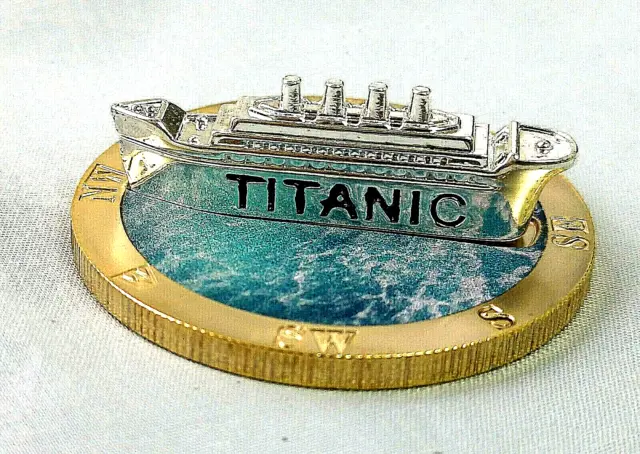
Titanic 3D Silver Ship Gold Coin Compass Sank 1912 Ocean Liner Film Cruise Model
£14.99 Buy It Now 21h 51m
Queen Elizabeth II Gold Bar Platinum Jubilee King Charles III Royal Family Retro
£12.99 Buy It Now 21h 29m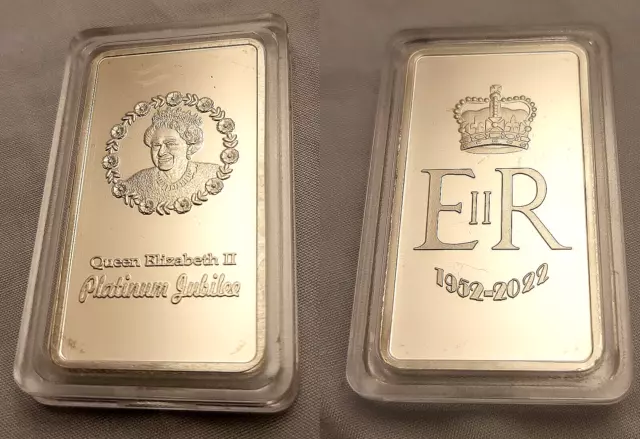
Queen Elizabeth II Silver Bar Coronation King Charles III London Royal Family UK
£12.99 Buy It Now 26d 1h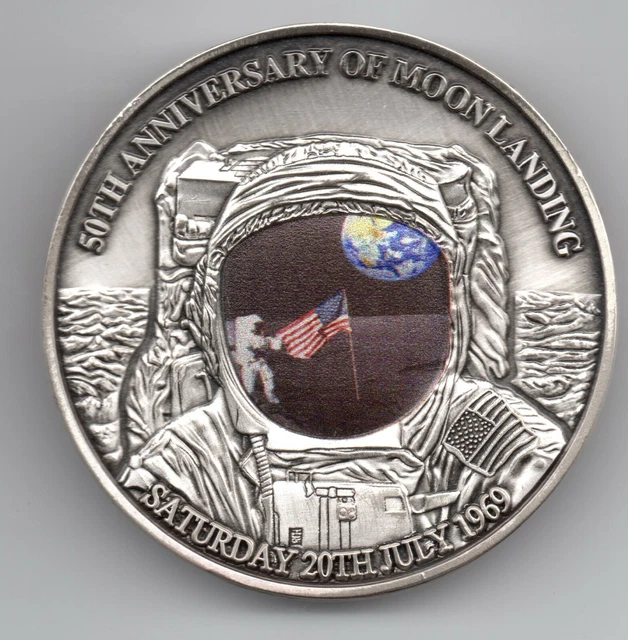
3D Dome Moon Surface Silver Coin 1st Man Landing U C Old Apollo 1969 Sci-Fi USA
£14.99 Buy It Now 6d 22h
Wolf of Wall Street Gold Coin Margot Robbie Metal Tin Movie Titanic Risque Dirty
£8.99 Buy It Now 8d 21h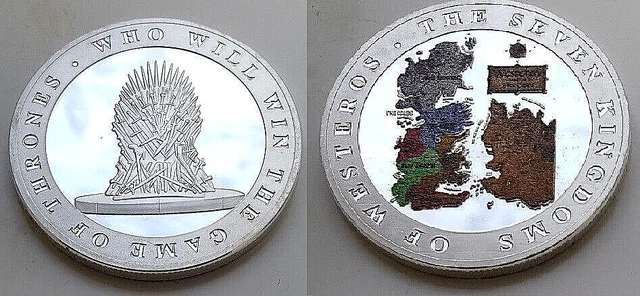
GAME OF THRONES Silver Coin House of Dragons Fantasy TV Series Disney Gold Crown
£8.99 Buy It Now 11d 23h
TITANIC Gold Silver Map Coin Voyage 1912 Maritime RMS Vintage London New York
£8.99 Buy It Now 25d 23h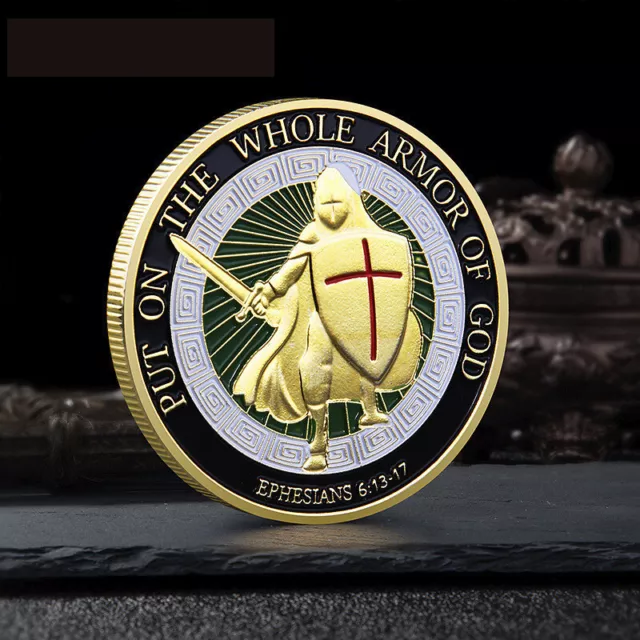
1Pc Put on the Whole Armor of God Commemorative Challenge Collection Coin Gift
£2.09 Buy It Now 5d 5h
1912 RMS TITANIC Silver Coin Fiji Canada Ship Ice Berg Queen Elizabeth II Old UK
£9.99 Buy It Now 15d 21h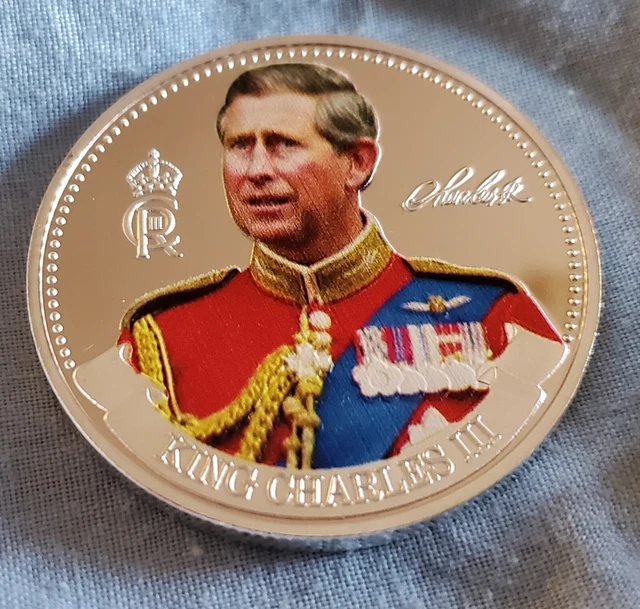
Queen Elizabeth II Gold Silver Coin King Charles III Signed Union Jack Royalty
£12.99 Buy It Now 18d 21h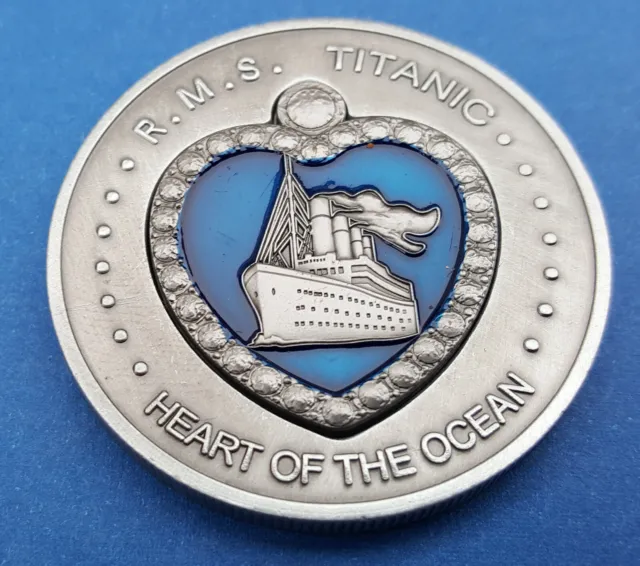
TITANIC Heart of the Ocean Pendant Antique Silver Coin Rose Naked Drawing Old
£11.69 Buy It Now 15d 21h
Diana Silver Coin Union Jack Old Signed King Charles William Kate Middleton UK
£11.69 Buy It Now 7d 23h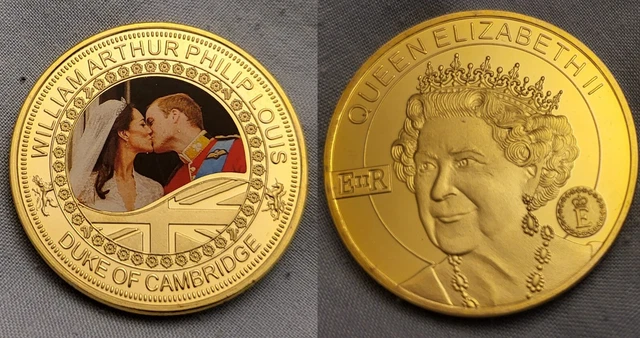
Prince William Kate Middleton Marriage Gold Coin Queen Elizabeth II London Old
£8.99 Buy It Now 13d 23h
1969 Love Gold Coin Cupid Heart Roses Flowers Map of World Amor Valentines Day
£9.99 Buy It Now 22d 23h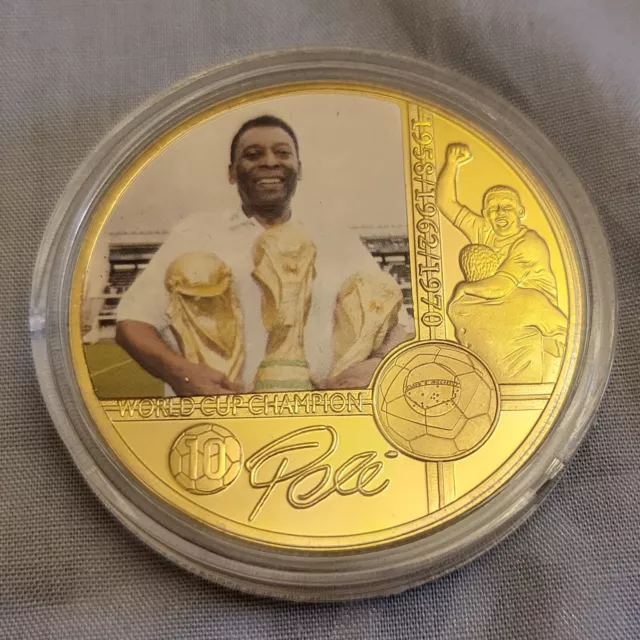
Pele Gold Coin 3 time World Cup Winner Brazil Signed Qatar 2022 Legend Santos UK
£9.99 Buy It Now 15d 21h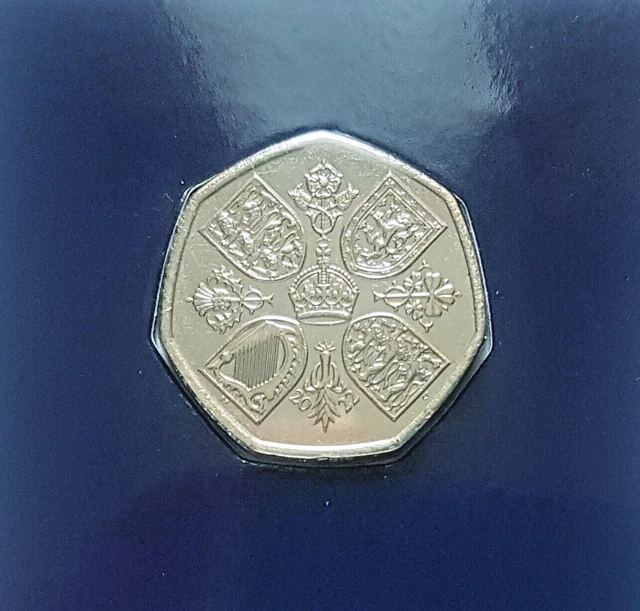
2022 Uk 50P King Charles Iii - Queen Elizabeth Ii Memorial Fifty Pence Coin Unc
£5.99 Buy It Now 24d 23h
Ayrton Senna Lewis Hamilton Gold Coin Autographed Formula 1 Motor Car Racing UK
£0.99 1 Bid 1d 1h
Official Coronation Portrait of His Majesty King Charles III Silver Coin 32mm
£13.99 Buy It Now 7d 17h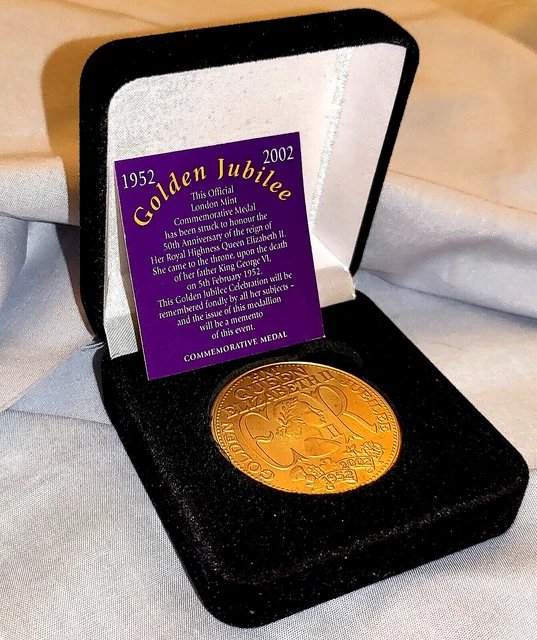
1952 2002 Queen Elizabeth II Gold Jubilee Coin Medal COA Old Spare Royalty Nice
£7.50 8 Bids 1d 1h
Queen Elizabeth II Gold Silver Coin Autograph Funeral Royal Family King Charles
£13.49 Buy It Now 11d 21h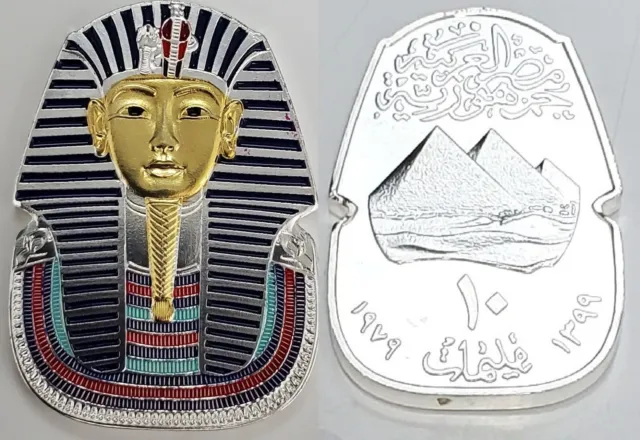
Gold Silver Pharaoh Coin Medal Egypt Pyramids History Sphinx Roman Empire Old UK
£12.99 Buy It Now 22d 22h
Donald Trump Silver Gold Coin US President MAGA White House Americana 2024 USA
£11.69 Buy It Now 1d 21h
1、5、12 PCS Marvel's The Avengers Commemorative Coins Collection Coin Gift Boxed
£2.09 Buy It Now 6d 12h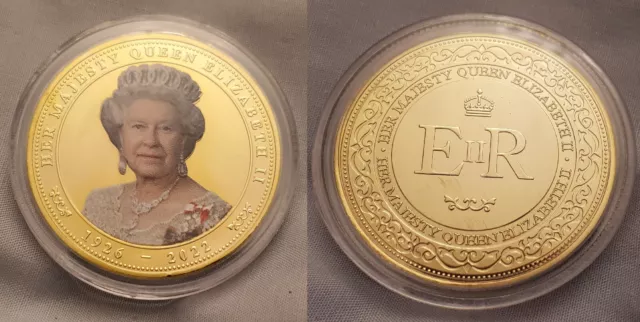
Queen Elizabeth II Gold Coin King Charles III Medal Royal Family London England
£9.99 Buy It Now 29d 0h
D-Day Gold Coin World War II World Leaders I 1944 2019 Trump Queen Trudeau USA
£8.99 Buy It Now 17d 1h
Avengers coins marvel comics Stan Lee coin selection gold plated coins Endgame
£4.99 Buy It Now 1d 23h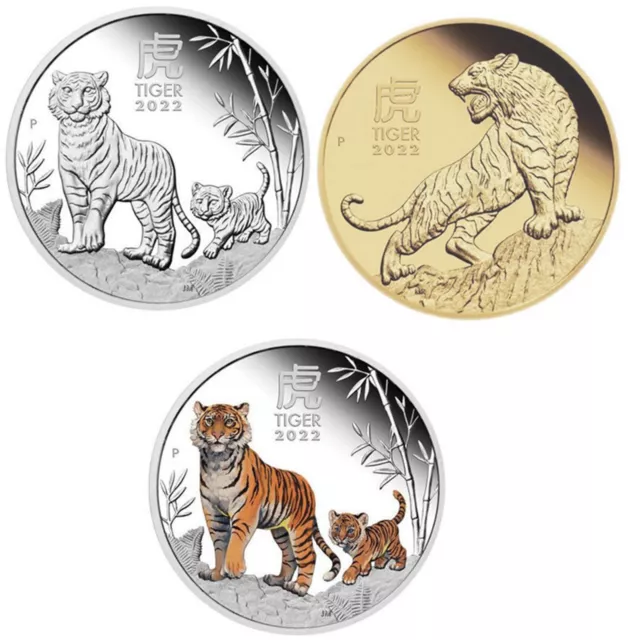
Tiger Year Commemorative Coin - Collectible Elizabeth II Silver Plated Coins
£6.11 Buy It Now 10h 21m
Queen Elizabeth II Silver Bar Platinum Jubilee London Royal Family UK
£15.00 Buy It Now 17d 21h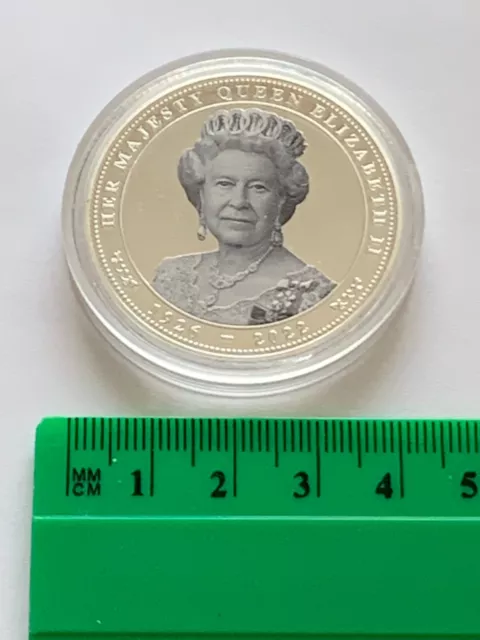
Queen Elizabeth The Second Commemorative Coin. 96 Years 1926 - 2022
£12.50 Buy It Now 29d 11h
2023 The King Of England Charles III Coronation Gold Plated Commemorative Coin
£7.19 Buy It Now 12h 6m 14 watchers
14 watchers 1000s DVDs/Blu-rays/Games/CDs/Books To Choose From *** (see description) ***£999.99 Buy It Now or Best Offer
1000s DVDs/Blu-rays/Games/CDs/Books To Choose From *** (see description) ***£999.99 Buy It Now or Best Offer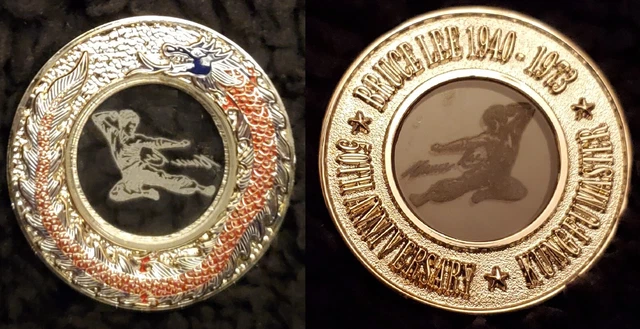 7 watchers
7 watchers Bruce Lee See Through Glass Silver Coin Dragon Signed Hong Kong Martial Arts UK
Bruce Lee See Through Glass Silver Coin Dragon Signed Hong Kong Martial Arts UK£9.99£8.99 Buy It Now or Best Offer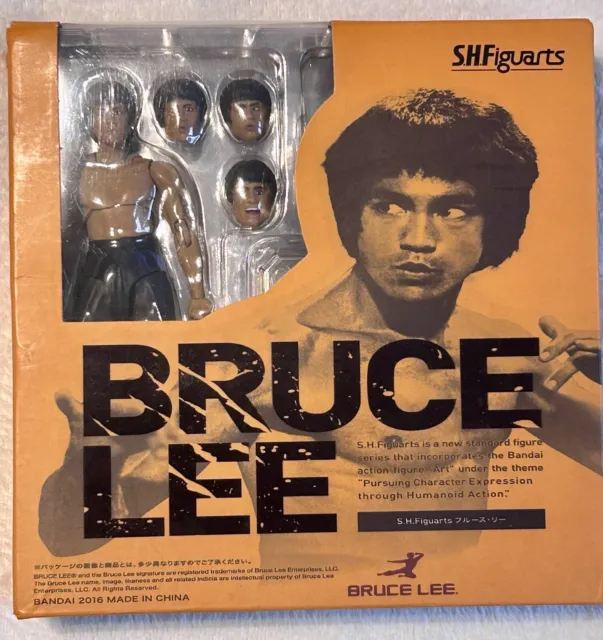
Bruce Lee S H Figuarts 2016 Action Figure Sealed/Unopened. Please See Pics.
£75.00 Buy It Now or Best Offer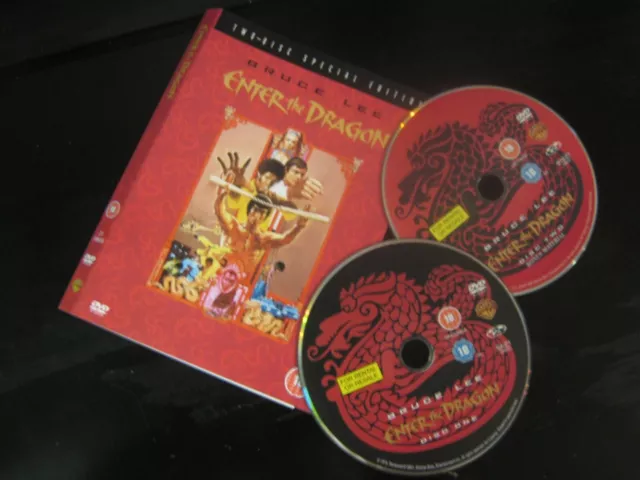
Lot #3175 - Enter the Dragon DVD (1973) - Bruce Lee - 2 Disc Special - See Below
£3.50 Buy It Now
Lot #2422 - Dragon Bruce Lee Story 1993 DVD Jason Scott Robert Wagner -See Below
£2.75 Buy It Now
Multiple Film DVDs UK Region 2 - many in AS-NEW condition
£3.99 Buy It Now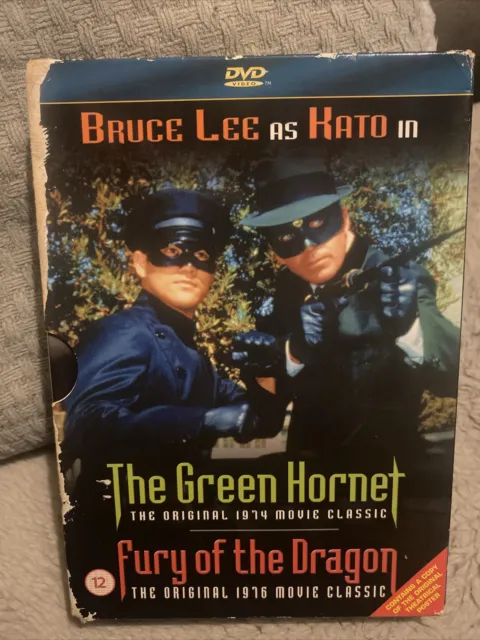
The Green Hornet/Fury of the Dragon DVD - RARE - Free UK P&P - SEE NOTES!!
£9.95 Buy It Now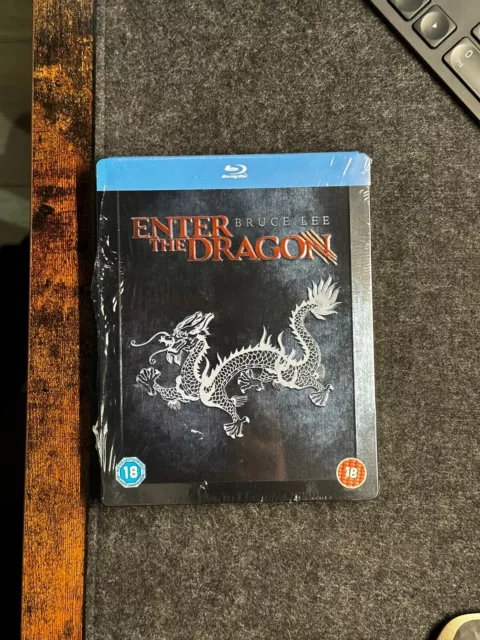
ENTER THE DRAGON (1973) RARE UK BLU RAY STEELBOOK - See Description
£27.99 Buy It Now or Best Offer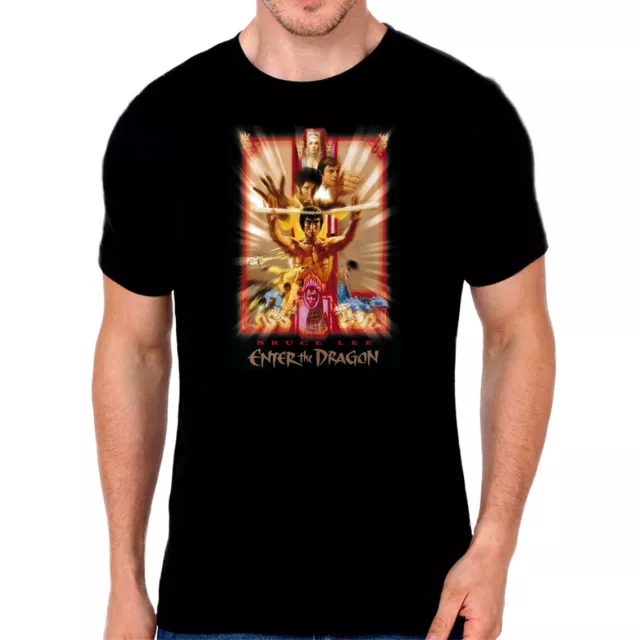
BRUCE LEE T Shirt - Enter The Dragon Movie Poster T Shirt - Asian Version
£9.49 Buy It Now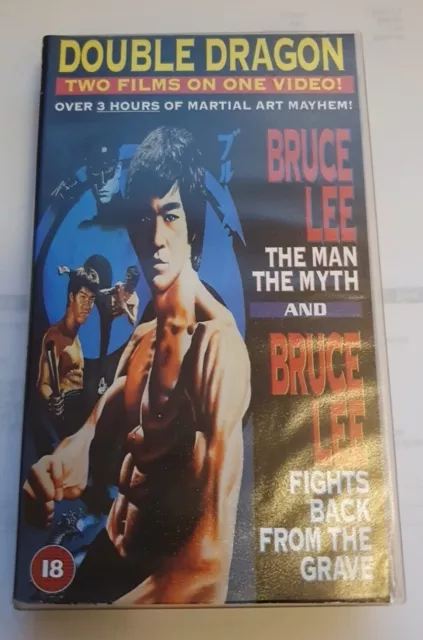
Double Dragon | Bruce Lee The Man The Myth + Fights Back From The Grave 1993 VHS
£3.99 0 Bids 3d 0h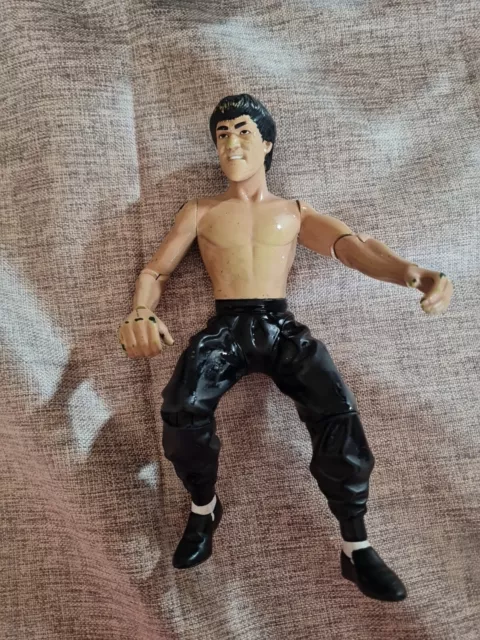 2 watchers
2 watchersVintage Bruce Lee Sideshow 1999 Figure With Movable Joints
£8.50 Buy It Now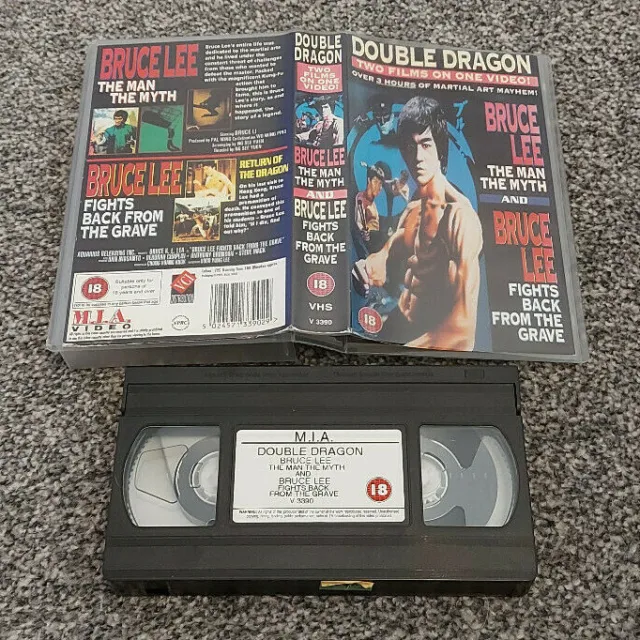 1 watcher
1 watcherBruce Lee Double Dragon The Man The Myth Fights Back Pal Vhs Video
£4.50 Buy It Now or Best Offer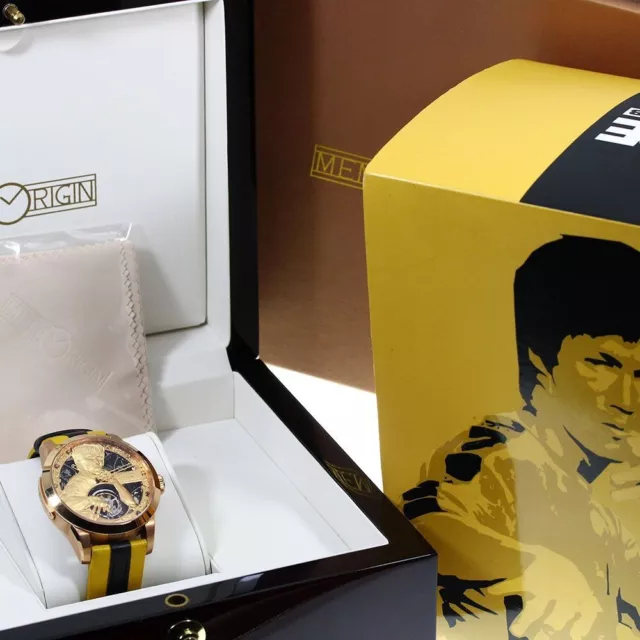 3 watchers
3 watchersMEMORIGIN Tourbillon Bruce Lee Limited Model MO1005G Manual Winding Men's Watch
£3,127.82 Buy It Now or Best Offer
Kung Fu Dragon Movie Tshirt Men's Classic Enter 70s Martial Arts Woman UK Seller
£12.99 Buy It Now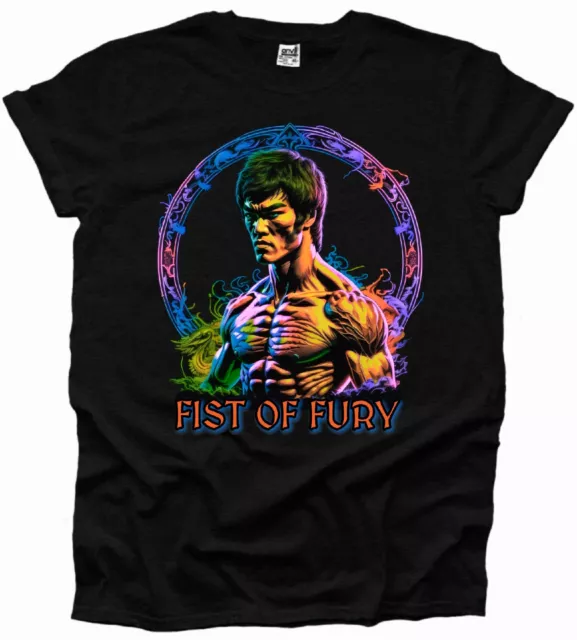
Kung Fu Dragon Movie Tshirt Men's Classic Enter 70s Martial Arts Woman UK Seller
£9.99 Buy It Now
BRUCE LEE the DRAGON RISES #0, NM, FCBD, 2016, Kung, more Promo / items in store
£5.57 Buy It Now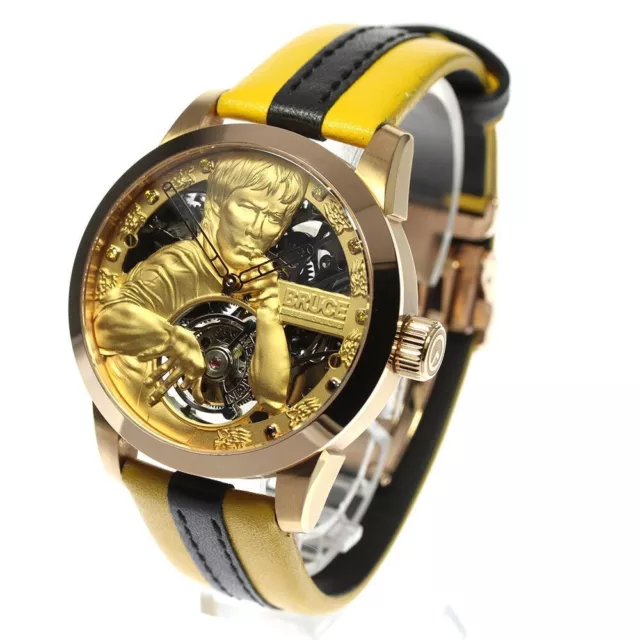 2 watchers
2 watchersMEMORIGIN MO1005G Tourbillon Bruce Lee Limited Edition Manual Winding Men Watch
£2,746.05 Buy It Now or Best Offer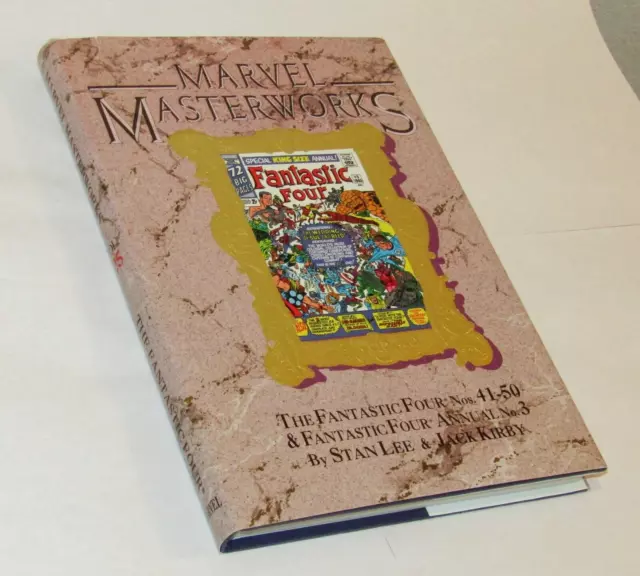 1 watcher
1 watcherMarvel Masterworks #25 - FANTASTIC FOUR Vol 5 (41-50, Annual #3) See Description
£25.46 Buy It Now or Best Offer 2 watchers
2 watchersWIZARD Comics Magazine No 90 Feb 1999 Witchblade / Tomb Raider
£11.16 Buy It Now
Wizard Comics Magazine 93 May 1999 Cover 3
£10.35 Buy It Now 1 watcher
1 watcherWIZARD MAGAZINE ISSUE #93 MAY 1999 COVER 2 OF 3 Batman Avengers
£7.17 Buy It Now or Best Offer
Wizard, #101, Wizard February 2000 & GB0118
£4.77 Buy It Now or Best Offer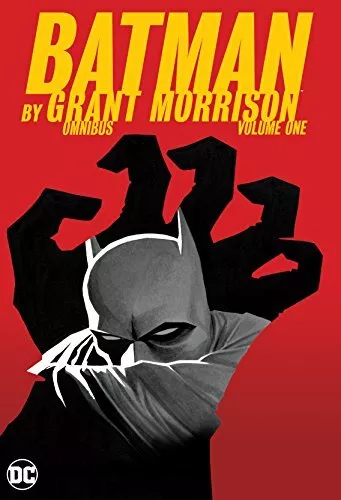 1 watcher
1 watcherBatman by Grant Morrison Omnibus Vol. 1 by Grant Morrison
£56.55 Buy It Now 1 watcher
1 watcherAll Star Batman & Robin Tpb See Pics For Condition Frank Miller Jim Lee
£9.56 Buy It Now or Best Offer
